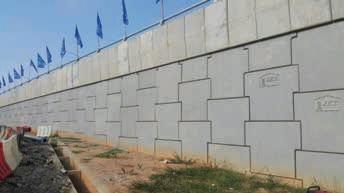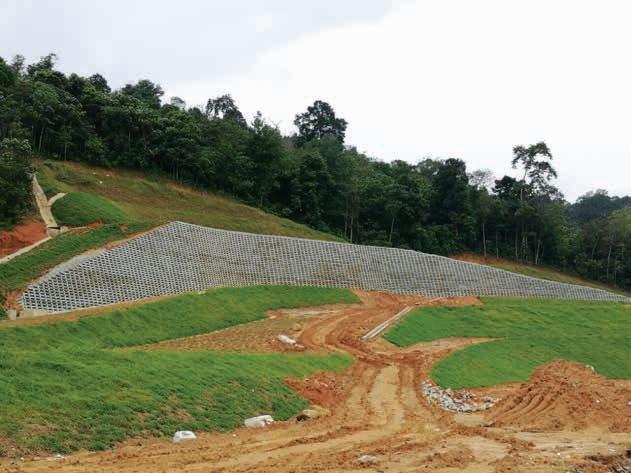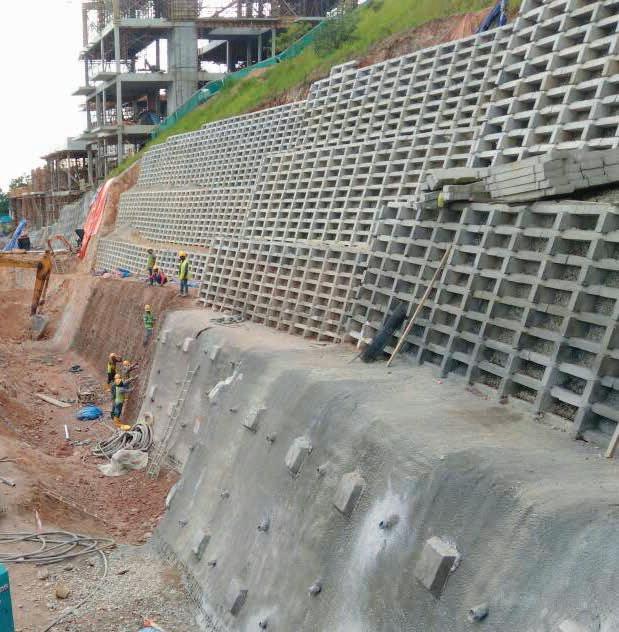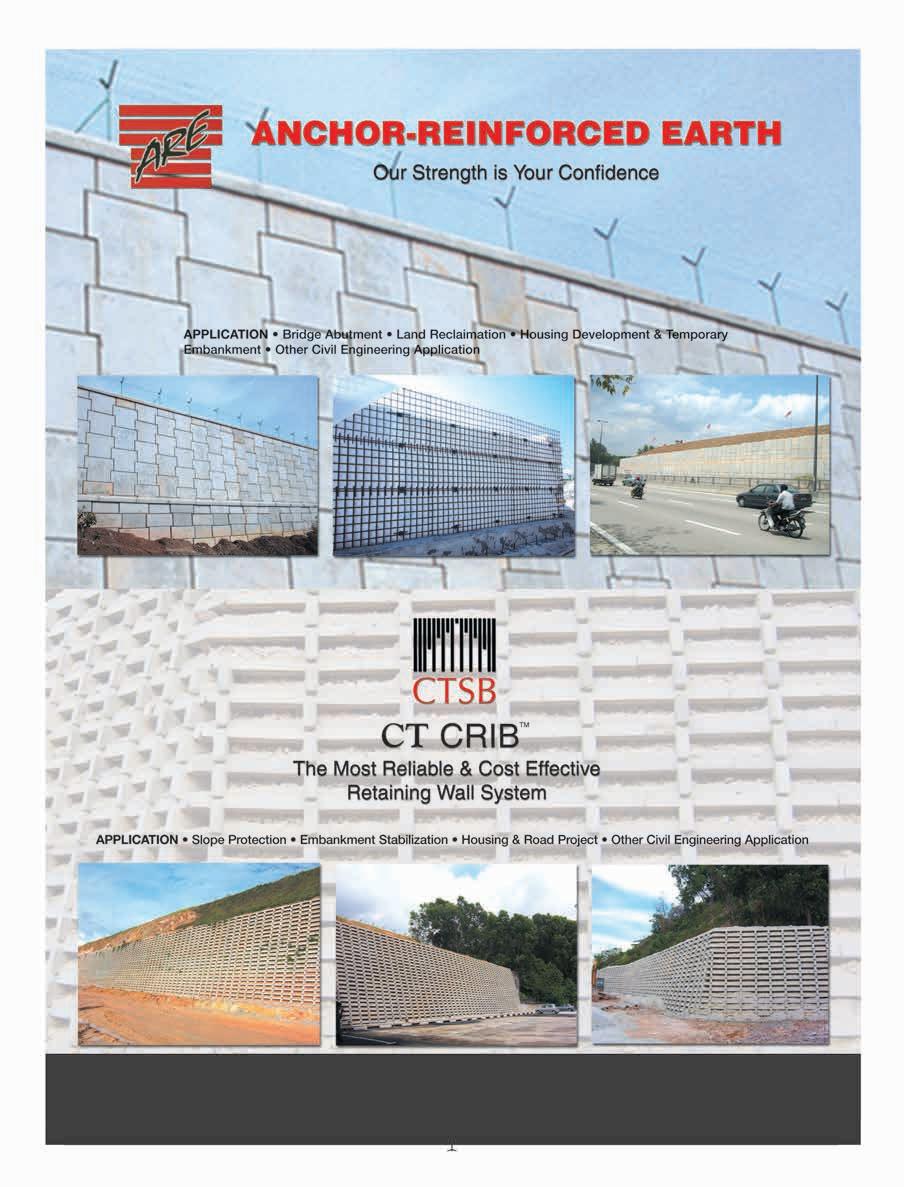

jurutera
The Environment Sustainability & Food Safety, The Environment Sustainability & Food Safety,
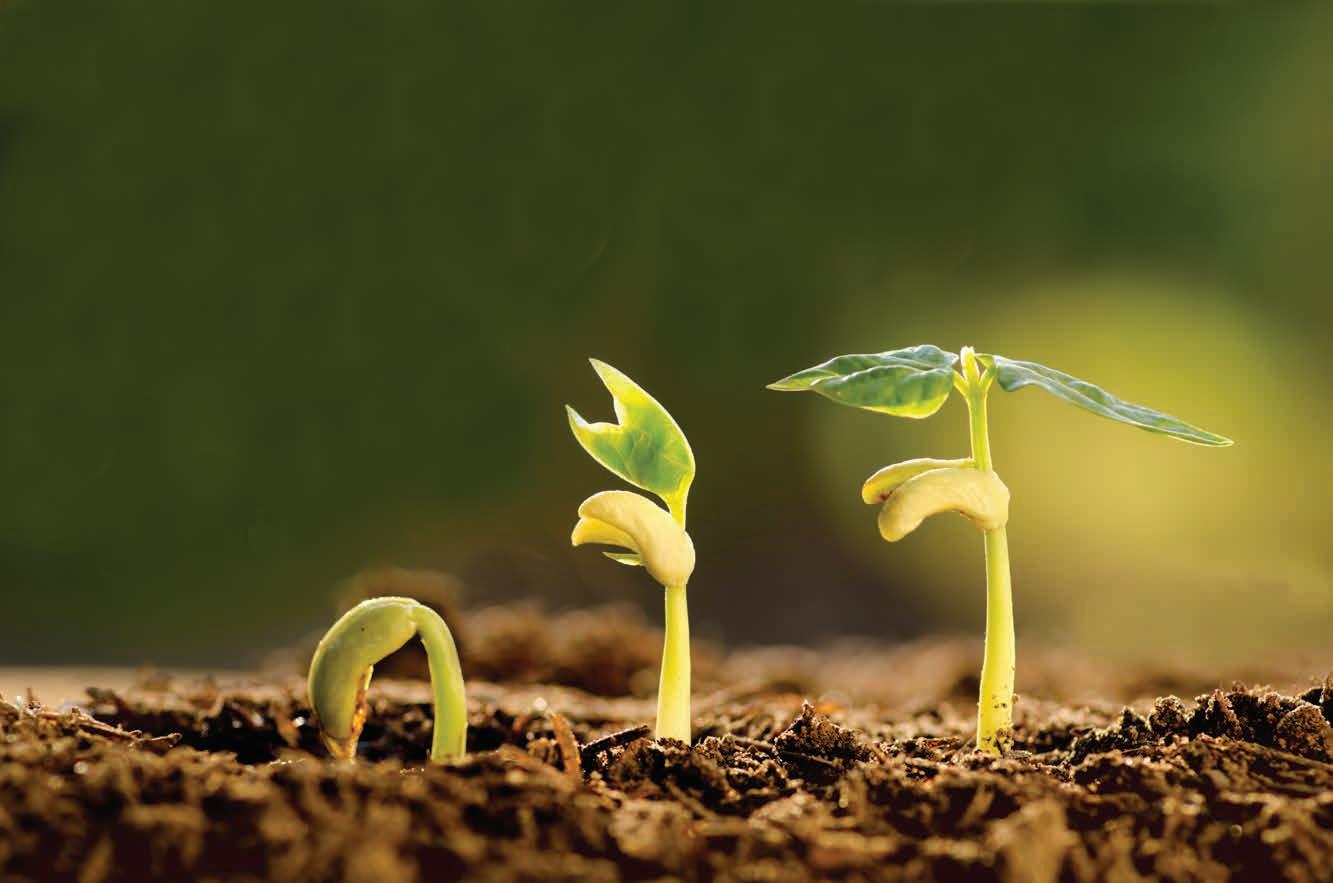




From general retail scenarios to high-end stores, the cameras o er retailers both quantitative and qualitative understanding of their customer tra c for e ective management and operation optimization.


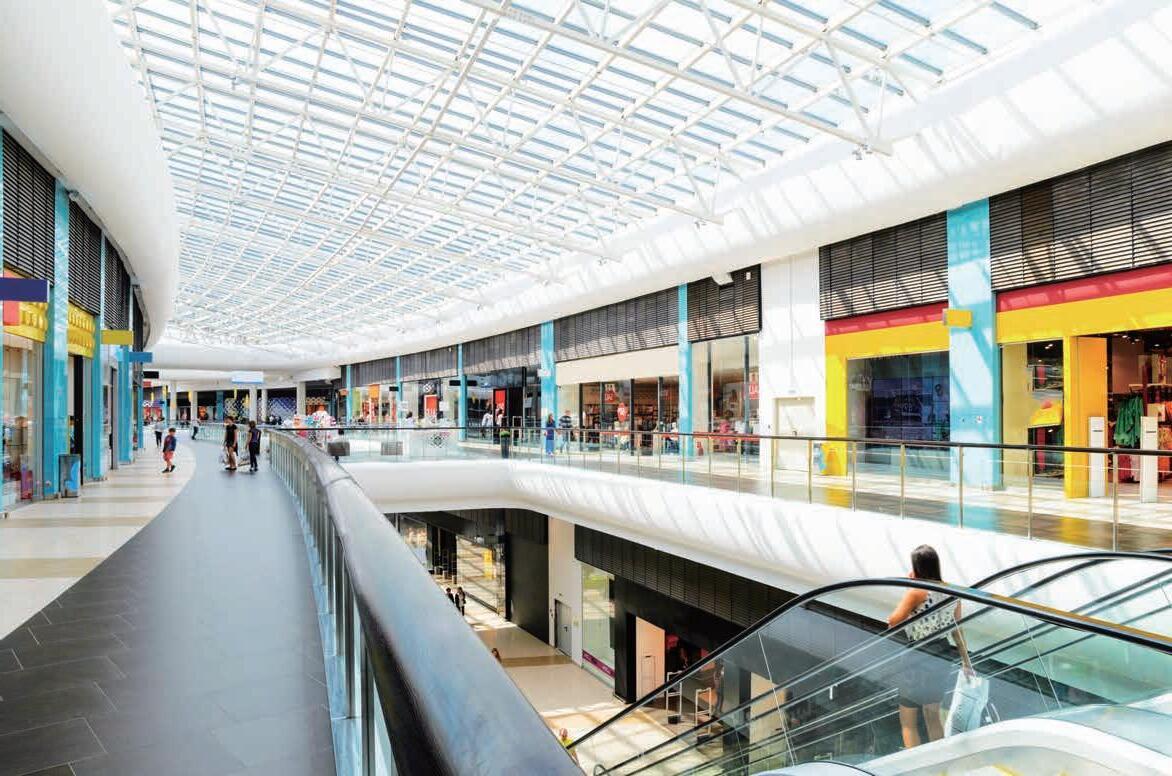
Identification








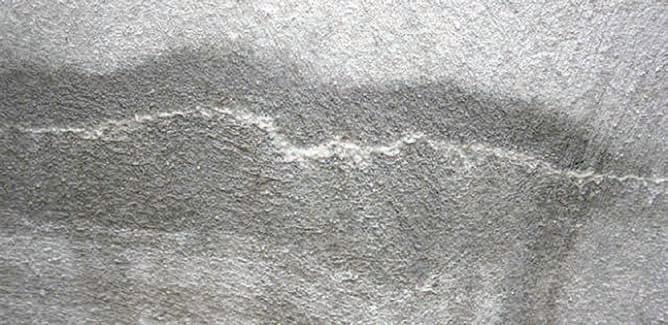
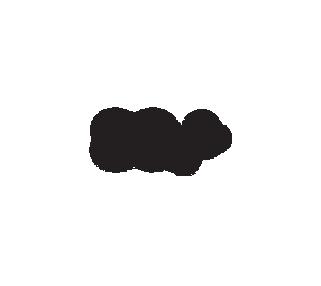




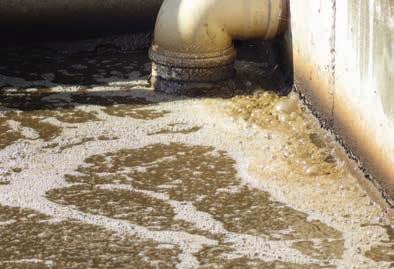












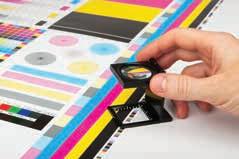



JURUTERA
Number 01, JANUARY 2021
IEM Registered on 1 May 1959
MAJLIS BAGI SESI 2020/2021 (IEM COUNCIL SESSION 2020/2021)
YANG DIPERTUA / PRESIDENT
Ir. Ong Ching Loon
TIMBALAN YANG DIPERTUA / DEPUTY PRESIDENT
Ir. Prof. Dr Norlida bt Buniyamin
NAIB YANG DIPERTUA / VICE PRESIDENTS
Y.Bhg. Dato’ Ir. Ahmad Murad bin Omar, Ir. Dr Tan Chee Fai, Ir. Mohd Aman bin Hj. Idris,
Ir. Dr Wang Hong Kok, Ir. Prof. Dr Leong Wai Yie, Ir. Mohd Khir bin Muhammad, Ir. Prof. Dr Ruslan bin Hassan
SETIAUSAHA KEHORMAT / HONORARY SECRETARY
Ir. Dr David Chuah Joon Huang
BENDAHARI KEHORMAT / HONORARY TREASURER
Ir. Chen Harn Shean
BEKAS YANG DIPERTUA TERAKHIR / IMMEDIATE PAST PRESIDENT Ir. David Lai Kong Phooi
BEKAS YANG DIPERTUA / PAST PRESIDENTS
Y.Bhg. Academician Tan Sri Datuk Ir. (Dr) Hj. Ahmad Zaidee bin Laidin, Y.Bhg. Dato’ Ir. Dr Gue See Sew, Y.Bhg. Dato’ Paduka Ir. Keizrul bin Abdullah, Y.Bhg. Academician Tan Sri Dato’ Ir. Prof. Dr Chuah Hean Teik, Y. Bhg. Dato’ Ir. Lim Chow Hock
WAKIL AWAM / CIVIL REPRESENTATIVE
Ir. Yap Soon Hoe
WAKIL MEKANIKAL / MECHANIC AL REPRESENTATIVE
Ir. Dr Aidil bin Chee Tahir
WAKIL ELEKTRIK / ELECTRICAL REPRESENTATIVE
Ir. Francis Xavier Jacob
WAKIL STRUKTUR / STRUCTURAL REPRESENTATIVE
Ir. Gunasagaran Kristnan
WAKIL KIMIA / CHEMICAL REPRESENTATIVE
Ir. Prof. Dr Lee Tin Sin
WAKIL LAIN-LAIN DISPLIN / REPRESENTATIVE TO OTHER DISCIPLINES
Ir. Dr Bhuvendhraa Rudrusamy
WAKIL MULTIMEDIA DAN ICT / ICT AND MULTIMEDIA REPRESENTATIVE
Ir. Jeewa Vengadasalam
WAKIL JURUTERA WANITA / WOMEN ENGINEERS REPRESENTATIVE
Ir. Rusnida bt Talib
WAKIL BAHAGIAN JURUTERA SISWAZAH / YOUNG ENGINEERS SECTION REPRESENTATIVES
Dr Yew Weng Kean, Mr. Kuugan Thangarajoo, Mr. Lim Yiren, Ms. Tiang Kor Lin, Mr. Tan Teck Ying
AHLI MAJLIS / COUNCIL MEMBERS
Y.Bhg. Dato’ Ir. Nor Hisham Mohd Ghazali, Ir. Toh Chin Kok, Ir. Dr Jeyanthi Ramasamy, Ir. Yim Hon Wa, Ir. Yam Teong Sian, Y.Bhg. Dato’ Ir. Fakharazi bin Wahijan, Ir. Yasotha Ramachandran Chetty, Ir. Mohmad Asari bin Daud, Ir. Ng Beng Hooi, Ir. Dr Lai Khin Wee, Ir. Dr Tan Kuang Leong, Ir. Mah Siew Kien, Y.Bhg. Dato’ Ir. Mohd Azmi bin Ismail, Ir. Ng Yong Kong, Ir. Dr Mui Kai Yin, Y.Bhg. Dato’ Ir. Noor Azmi bin Jaafar, Ir. Ting Chek Choon, Ir. Sukhairul Nizam bin Abdul Razak, Ir. Lai Sze Ching, Y.Bhg. Dato’ Ir. Dr Ahmad Anuar bin Othman, Ir. Dr Chan Swee Huat, Ir. Ellias bin Saidin, Ir. Mohd Radzi bin Salleh, Dato’ Ir. Hj. Anuar bin Yahya, Ir. Dr Teo Fang Yenn, Ir. Prof. Dr Jeffrey Chiang Choong Luin AHLI MAJLIS / COUNCIL MEMBERS BY INVITATION
Y.Bhg. Dato’ Seri Ir. Dr Zaini bin Ujang, Ir. Dr Lee Yun Fook, Ir. Fam Yew Hin PENGERUSI CAWANGAN / BRANCH CHAIRMAN
1. Pulau Pinang: Ir. Yau Ann Nian
2. Selatan: Ir. Wong Yee Foong
3. Perak: Ir. Simon Yeong Chin Chow
4. Kedah-Perlis: Ir. Mohamad Shaiful Asrul bin Ishak
5. Negeri Sembilan: Ir. Chong Chee Yen
6. Kelantan: Ir. Shaipuddin bin Shapii
7. Terengganu: Ir. Abdullah Zawawi bin Mohamad Noor
8. Melaka: Ir. Puvanasvaran a/l Perumal
9. Sarawak: Ir. Haidel Heli
10. Sabah: Ir. Jeffrey Ng Vun Ping
11. Miri: Ir. Wong Siong Ung
12. Pahang: Ir. Ahmad Kamal bin Kunji
AHLI JAWATANKUASA INFORMASI DAN PENERBITAN/ STANDING COMMITTEE ON INFORMATION AND PUBLICATIONS 2020/2021
Pengerusi/Chairman: Ir. Prof. Dr Leong Wai Yie Naib Pengerusi/Vice Chairman: Ir. Fam Yew Hin Setiausaha/Secretary: Ir. Lau Tai Onn Ketua Pengarang/Chief Editor: Ir. Dr Leong Wai Yie Pengarang Prinsipal Buletin/ Principle Bulletin Editor: Ir. Dr Bhuvendhraa Rudrusamy Pengarang Prinsipal Jurnal/Principal Journal Editor: Ir. Dr David Chuah Joon Huang Pengerusi Perpustakaan/Library Chairman: Ir. C.M.M. Aboobucker Ahli-Ahli/Committee Members: Ir. Ong Guan Hock, Ir. Yee Thien Seng, Ir. Chin Mee Poon, Ir. Dr Oh Seong Por, Ir. Prof. Dr Abdul Aziz bin Abdul Samad, Dr Sudharshan N. Raman, Ir. Dr Lai Khin Wee, Ir. Tiong Ngo Pu, Ir. Dr Lee Tin Sin, Ir. Yam Teong Sian, Ir. Yap Soon Hoe, Ir. Toh Chin Kok
LEMBAGA PENGARANG/EDITORIAL BOARD 2020/2021 Ketua Pengarang/Chief Editor: Ir. Dr Leong Wai Yie Pengarang Prinsipal Buletin/ Principle Bulletin Editor: Ir. Dr Bhuvendhraa Rudrusamy Pengarang Prinsipal Jurnal/Principal Journal Editor: Ir. Dr David Chuah Joon Huang Ahli-ahli/Committee Members: Ir. Lau Tai Onn, Ir. Ong Guan Hock, Ir. Yee Thien Seng, Ir. Dr Oh Seong Por, Dr Sudharshan N. Raman, Ir. Dr Lai Khin Wee Secretariat: Janet Lim, May Lee
THE INSTITUTION OF ENGINEERS, MALAYSIA Bangunan Ingenieur, Lots 60 & 62, Jalan 52/4, P.O. Box 223, (Jalan Sultan), 46720 Petaling Jaya, Selangor Darul Ehsan. Tel: 603-7968 4001/4002 Fax: 603-7957 7678 E-mail: sec@iem.org.my Homepage: http://www.myiem.org.my
NOTE & EDITOR’S NOTE Food Safety, Sustainability & The Environment
Ice Cream: From Gastronomy to Engineering
Biogas Capture & Conversion Into Bio-CNG in Palm Oil Sector
Love the Greens, Filter the Waste
Awareness of Halal for Industrial Sector
Bean Bag Session with Petronas
Webinar on Diversity & Inclusion in Engineering Education
Design Contest
Tugu Negara - The Unforgotten
War Memorial

Introductory Rate for New Advertisers

3,200/page RM 3,200/page
Full-Colour Advertisement
This one-time-only special rate o er is for new advertisers.
Space availability is subject to booking on a first-come-first-served basis.
Clients will provide ready-to-print artwork in PDF format with 300dpi.
Full page: 210mm x 285mm, 5mm extra bleed sizes for 4-sided with crop mark.
Advertising space must be utilised before 30 June 2021.
*Please note that the above rate will be subjected to 6% SST. For overseas advertisers, an additional 25% will be charged.
Rate shown above excludes 15% advertising agency commission.
Payment term: Full advance payment.
Artwork submission deadline is on (or before) the 1st week of the prior month of publication. After the material deadline, no cancellation or alteration to the advertisement will be entertained.
Any cancellation after signing the advertising order will result in a 50% penalty charge.
The publisher reserves the right to edit, revise or reject any advertisement deemed unsuitable or inappropriate.
JURUTERA has an estimated readership of 200,000 professionals. Our esteemed readership consists of certi ed engineers, decision making corporate leaders, CEOs, government o cials, project directors, entrepreneurs, project consultants, engineering consulting rms and companies involved with engineering products and services. Circulation & Readership Pro le
DIMENSION PUBLISHING SDN. BHD. [ 199701034233 (449732-T) ]
Level 18-01-02, PJX-HM Shah Tower, No. 16A, Persiaran Barat, 46050 Petaling Jaya, Selangor Darul Ehsan, Malaysia. Tel: +(603) 7493 1049 Fax: +(603) 7493 1047
E-mail: info@dimensionpublishing.com Website: www.dimensionpublishing.com
CHAIRMAN
ROBERT MEBRUER
CEO/PUBLISHER
PATRICK LEUNG
GENERAL MANAGER
SHIRLEY THAM ● shirley@dimensionpublishing.com
HEAD OF MARKETING & BUSINESS DEVELOPMENT
JOSEPH HOW ● joseph@dimensionpublishing.com
PRODUCTION EDITOR
TAN BEE HONG ● bee@dimensionpublishing.com
CONTRIBUTING WRITERS
PUTRI ZANINA ● putri@dimensionpublishing.com
LAURA LEE ● laura@dimensionpublishing.com
SENIOR GRAPHIC DESIGNER
SUMATHI MANOKARAN ● sumathi@dimensionpublishing.com
GRAPHIC DESIGNER
SOFIA ● sofia@dimensionpublishing.com
ADVERTISING CONSULTANTS
THAM CHOON KIT ● ckit@dimensionpublishing.com
ACCOUNTS CUM ADMIN EXECUTIVE
YEN YIN ● yenyin@dimensionpublishing.com
For advertisement placements and subscriptions, please contact: DIMENSION PUBLISHING SDN. BHD. [ 199701034233 (449732-T) ]
Level 18-01-02, PJX-HM Shah Tower, No.16A, Persiaran Barat, 46050 Petaling Jaya, Selangor Darul Ehsan, Malaysia. Tel: +(603) 7493 1049 Fax: +(603) 7493 1047 E-mail: info@dimensionpublishing.com
Subscription Department E-mail: info@dimensionpublishing.com
JURUTERA is published and printed monthly by Dimension Publishing Sdn. Bhd.
JURUTERA MONTHLY CIRCULATION: OVER 50,000 MEMBERS
Submission or placement of articles in JURUTERA could be made to the:Chief Editor
THE INSTITUTION OF ENGINEERS, MALAYSIA (IEM) Bangunan Ingenieur, Lots 60 & 62, Jalan 52/4, P.O. Box 223 (Jalan Sultan), 46720 Petaling Jaya, Selangor. Tel: +(603) 7968 4001/4002 Fax: +(603) 7957 7678 E-mail: pub@iem.org.my or sec@iem.org.my IEM Website: http://www.myiem.org.my
© 2020, The Institution of Engineers, Malaysia (IEM) and Dimension Publishing Sdn. Bhd.
PUBLICATION DISCLAIMER
The publication has been compiled by both IEM and Dimension with great care and they disclaim any duty to investigate any products, process, services, designs and the like which may be described in this publication. The appearance of any information in this publication does not necessarily constitute endorsement by IEM and Dimension. There is no guarantee that the information in this publication is free from errors. IEM and Dimension do not necessarily agree with the statement or the opinion expresssed in this publication.
COPYRIGHT
JURUTERA Bulletin of IEM is the official magazine of The Institution of Engineers, Malaysia (IEM) and is published by Dimension Publishing Sdn. Bhd. The Institution and the Publisher retain the copyright over all materials published in the magazine. No part of this magazine may be reproduced and transmitted in any form or stored in any retrieval system of any nature without the prior written permission of IEM and the Publisher.
COVER NOTE
TAKING A LOOK AT FOOD SECURITY
by Ir. Vasan Mariappan Chairman, Agricultural & Food Engineering Technical Division
Food security is the state of having reliable access to a sufficient quantity of affordable and nutritious food. High population growth and rising urbanisation are putting a strain on the food system in certain parts of the world.
In some countries, scarce natural resources (particularly arable land and water) and climate change are factors that limit sufficient food production, so these have to rely increasingly on food imports to meet demand.

The Food & Agriculture Organisation of the United Nations is looking seriously into effective food security and nutrition governance mechanisms as well as the reduction of food waste and food loss. On a broader scope, food security is not only about production but also about trade, food quality, safety, marketing, distribution and, most importantly, livelihoods.
For successful implementation, food security requires cooperation at national and international levels and cooperation in areas such as scientific research, knowledge exchange and investment.
Malaysia is blessed with fertile soil, natural resources and good climate, so we can grow our own food and be sustainable. However, as we move towards being developed country, focus is leaning towards industrialisation, side-tracking the importance of food safety and security.
Food security is crucial for any nation to get healthier and to flourish, so in this month’s JURUTERA, the Agricultural & Food Engineering Technical Division (AFETD) takes a look at food security and highlights a few points.
EDITOR’S NOTE TOWARDS
SELF-SUSTAINABILITY IN FOOD PRODUCTION
by Ir. Dr Bhuvendhraa Rudrusamy Principle Bulletin Editor
Ihope everyone is feeling good and refreshed after returning from the holidays and is ready to start the year 2021 filled with hope and faith. In this month’s bulletin, the highlight is on food safety, environment and sustainability.
According to projections by the United Nations, the world’s population is expected to rise to 10 billion by the year 2057 and, simultaneously, the current trend shows an uprise in food insecurity.

In addition to climate change, locust threat and political conflict, the COVID-19 pandemic has been another major threat to food systems. Smallscale food producers continue to be hit hard by these crises.
While agriculture production has been targeted to double by the year 2030, engineering can be the key solution to maintaining our food security.
In Malaysia, a recent report by Bank Negara has indicated an increase in certain imports for food dependency. With the 4IR initiative, it is hoped that modern technologies such as smart sensor, IoT, cloud computing, drones, etc., will provide a breakthrough transformation to smart farming and precision agriculture for self-sustainability.
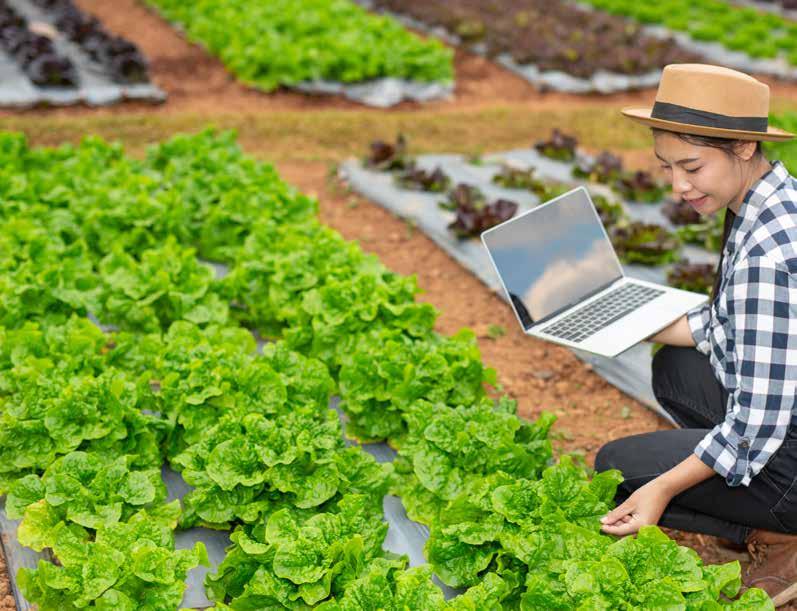
Safety, Sustainability & The Environment FOOD
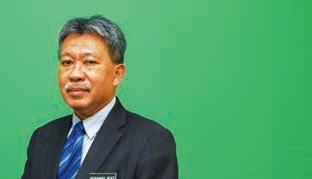
The Director General of Malaysian Agricultural Research & Development Institute (MARDI), Y.Bhg. Datuk Dr Mohamad Roff bin Mohd Noor, highlights the institute’s R&D work in advancing Malaysia’s agro-food sector.
The Director General of the Malaysian Agricultural Research & Development Institute (MARDI), Y.Bhg. Datuk Dr Mohamad Roff bin Mohd Noor, holds a PhD in Plant Virology from University of Reading, UK. He has won many awards for research work such as Tetracropping-Effective technique in combating virus infestations in chilli and Knowledge-Molecular epidemiology of whiteflytransmitted gemini-viruses in horticultural crops in Peninsular Malaysia. His other research works include evaluation and screening of papaya germplasm for PRSV resistance and delayed ripening, habitat management strategies for control of Aphis gossypii in chilli and the development of biosensors for agrobased, industrial and environmental applications.
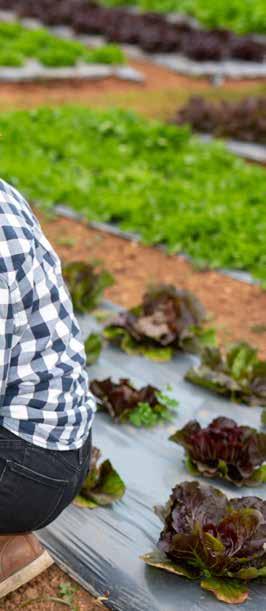
To achieve national food safety and a continuous supply of food, the agriculture and agrobased industry requires greater transformative measures to address current and foreseeable challenges, including the necessity to ensure environmental sustainability within the context of agricultural activities. Several Government bodies and agencies under the purview of the Ministry of Agriculture & Agro-based Industry (MOA) bear the responsibility of moving the industry forward; 2019 contributed RM101.5 billion (7.1%) of the Gross Domestic Product (GDP), making it the third highest contributor to the national income. Palm oil was the major contributor to the value added of agriculture sector at 37.7%, followed by other forms of agriculture
(25.9%), livestock (15.3%), fishing (12.0%), forestry & logging (6.3%) and rubber (3.0%).
One government body that plays an integral role in transforming the country’s agriculture and agro-based industry is the Malaysian Agricultural Research and Development Institute (MARDI), which conducts R&D and undertakes transfer of technology as well as commercialisation of its products and technologies.
Established 52 years ago on 28 October 1969, MARDI carries out projects that fall under three broad categories, namely public development projects spearheaded by MOA, collaborative projects with the private sector and contract research projects with private companies. Technological advancement is also high on the list of its priorities, with a focus on food safety and sustainability as well as protection of the environment.
TECHNOLOGY DEVELOPMENT AND COMMERCIALISATION
According to its Director General, Datuk Dr Mohamad Roff bin Mohd Noor, MARDI had developed some 1,000 technologies since its inception. The technologies are applied not only to the development of public goods which are given free to farmers and entrepreneurs, but also to the development of commercial goods under MARDI’s collaboration with industry players. These come with MARDI’s intellectual property (IP) rights.
“We charge parties which want to buy our IP rights. These have high commercial value as can be attested by the success of many agro-food sector entrepreneurs which have collaborated with us and received our guidance. Success stories include Ramli Burger, Kicap Kipas Cap Udang and Brahim’s food products,” says Datuk Dr Roff.
In terms of commercialisation of goods, he says the rate is about 15% of commercial technologies developed annually but the total varies every year, depending on the
projects carried out.
“In 2020, for example, our target was to develop 90 technologies and products, of which some would go to public goods and 15% to commercialised goods,” he says.
MECHANISATION & AUTOMATION
MARDI has been proactive in extending the technologies related to mechanisation and automation in the agro-food sector. In projects that involve engineering, MARDI’s work encompasses the development of machinery for food processing, such as those required by small and medium-sized enterprises (SMEs). These include machinery for making lemang and satay and for peeling coconuts.
Development work also involves field machinery, with a focus on work specific to padi fields with various soil conditions, such as peat and porous soil. Its field machinery can be used for requirements from land preparation to fertilising, harvesting and transportation.
Datuk Dr Roff says mechanisation and automation technologies are important as they can drive the country's agro-food sector development further. The advantages include the capability to produce a constant supply of agro-food products, reduce production costs, improve production rates and lower labour cost.
The National Agro-Food Policy 2011/2020 emphasises the importance of mechanisation and automation as well as outlines the strategic direction for R&D, innovation and use of technology. In so far as MARDI is concerned, its Engineering Research Centre is at the forefront of developing mechanisation and automation technologies which can provide solutions to issues faced by SMEs in the agro-food sector.
“Take, for example, pineapple cultivation. We have developed the machinery for transplanting and harvesting as well as applying liquid fertiliser and pesticide. For tuber
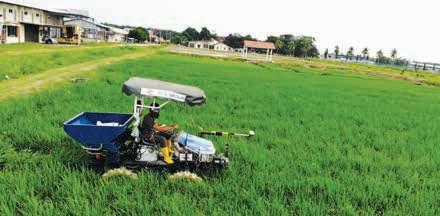
Fertiliser application system using Variable-rate technology (VRT) in rice production crops such as sweet potato, we have produced machinery for preparing planting beds, applying granule and liquid fertilisers as well as weeding,” says Datuk Dr Roff.
AGRICULTURE 4.0
Besides undertaking R&D in farm mechanisation as well as postharvest and food processing mechanisation, MARDI is also focusing on smart farming innovation and the development of technology applications, such as the Internet of Things (IoT) relevant to the agriculture and agro-food sector.Precision farming involves the development and use of new technologies to increase crop yields and profitability while lowering the levels of traditional inputs needed to grow crops, including land, water, fertiliser, herbicides and insecticides.
Datuk Dr Roff explains that farmers who use precision farming technologies are able to use less to grow more. Robotics, big data analytics, cloud computing, machine learning and IoT are some technologies which can be implemented parallel to the 4th Industrial Revolution (4IR) and these open up competitive advantages through increased productivity, flexibility, efficiency and customisation. Agriculture 4.0, which is a segment of 4IR, has a framework with 3 pillars: Automation, connectivity and intelligence.
1. Automation involves not only the application of technologies which can help monitor, control
and execute various processes but which also allows for the customisation of many agricultural processes such as seeding, weeding, cutting, harvesting, storing and packing of agro-products.
2. Connectivity technologies facilitate communication, engagement & data collation and exchange. This covers farm IoT systems where data derived from sensors that monitor farm conditions are sent to cloudbased computing platforms with built-in algorithms. These are also capable of supplying other data, including weather reports, to support decisions on when to harvest or to apply pesticides as well as market pricing information.
3. Intelligence, the third pillar, encompasses the process of analysing data collected from various sources and processing them into actionable decisions. This process is important in farm management.
MARDI plays an integral role in the above by bringing innovations in agriculture, from developing new crop varieties and livestock breeds to disease management methods, which contribute towards engineering solutions required under all the 3 pillars.
FOOD WASTE MANAGEMENT
MARDI is also involved in agriculture and food waste management. “Our initiatives in this area include the MySafe food campaign, in which we
have collaborated with SWCorp, nongovernmental organisations (NGOs) and a few private companies. In our collaboration with SWCorp, we have developed a machine that converts food waste into compost fertiliser for crops. Our collaboration with NGOs and private companies involve the collection of untouched food which we then distribute to the homeless and the needy,” says Datuk Dr Roff.
ENVIRONMENT AND SUSTAINABILITY
In contributing towards the environment and sustainability, Datuk Dr Roff says Mardi focuses on the production of greenhouses to help reduce methane and hydrogenous gases produced through agricultural activities.
“We are also looking at reducing water usage in rice planting, as water is now scarce in some areas. We are developing bacteria which, when applied into the soil, can help transport water to reach the plant roots. This can also help store water below the ground and will be particularly useful in areas which lack water. We also have a rice gene that can be planted in drought conditions. Our focus is on developing the drought-tolerant rice gene and the possibility of planting padi on troughs floating in the sea. The latter will require a rice gene that is tolerant to salty water,” says Datuk Dr Roff.
Another problem the agriculture sector faces is soil erosion, especially in Cameron Highlands and in areas with steep slopes such as Kundasang (Sabah) and Lojing (Kelantan). Cameron Highlands records high annual rainfall, so soil erosion continues to be a serious problem and sedimentation in rivers and drains is very high.
“It takes 100 lorries to remove and transport the sediment out. There is also a lot of incoming mud sediment. If this flows into the rivers, it is not within MARDI’s jurisdiction. So we plant trees to stop the soil erosion and vetivar grass on hill slopes for the same purpose,” he says.
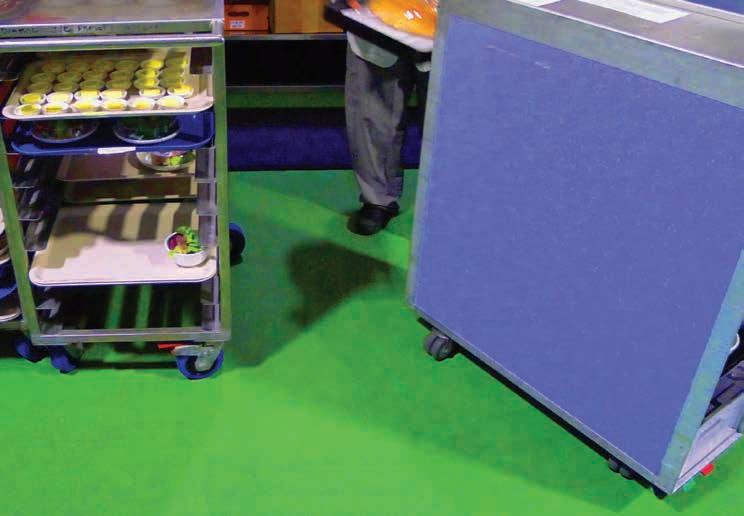
NEVER COMPROMISE ON FOOD SAFETY AND HYGIENE.
SIKAFLOOR® PURCEM® HS-21 system provides the solution to wet and dry food processing facilities flooring with it's great advantages and features.
High c h em i ca l res is tanc e t o a wide range o f o rganic and i no rgan i c a c id s, al kalis , am i ne s , s alt s a n d solvent s
Good t empe ratu r e r esis tance
High mechani c al and ab ras io n res is t an ce
WISH TO KNOW MORE?
Contact our Flooring specialist Sean Tan at +6017 556 6602 or download Sikafloor® Purcem® HS-21 product datasheet.
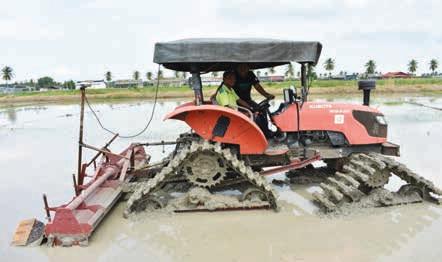
Illegal farming is another problem that plagues Cameron Highlands. “We urge the farmers to not ravage the jungles for farming activities as this will only worsen soil erosion. Land for agriculture there have been fully utilised. This is why more farmers are moving to Lojing, where the climate is similar to that in Cameron Highlands,” says Datuk Dr Roff.
MARDI has a station in Tanah Rata, the main town in Cameron Highlands. With the need for more environmental sustainability efforts in the highlands, the station has been converted to focus on conducting research on green farming.
“Our plan is to develop the concept of green farming, using green technology which will encompass the expansion of organic farming. We want farmers in Cameron Highlands to reduce the use of pesticides and inorganic fertilisers which are presently used intensively. One of our current efforts is introducing biological agents which can control/get rid of harmful insects. It involves the use of beneficial insects, which is a pest control strategy often used in organic farming or gardening as well as in integrated pest management,” he says.
MARDI has reared three types of beneficial insects – Diatechmaus, Patellis Coitesia and tiger moths – to protect vegetables such as cabbage and broccoli, from damage by plant pests and from diseases like flutella.
MARDI has also developed biopesticides containing virus which can kill flutella and fungus. Datuk Dr Roff says MARDI encourages farmers, both in the highlands and lowlands, to use bio-pesticides as well as organic fertilisers.
“We also want them to undertake multiple cropping or crop diversification by planting several crops in their plots. Our studies show that with single crops, insects and pests congregate on that single crop, causing widespread damage. But if farmers practise crop diversification, they can produce different volatility for different crops which will ‘confuse’ the insects, hence deterring them from attacking the crops,” he says.
According to him, MARDI’s engineering expertise in agriculture includes vegetable planting in an enclosed environment, without using insecticide, weedicide and pesticide. MARDI wants to expand this technology to integrate IoT eventually which will enable the use of artificial intelligence (AI) to help farmers in modern crop planting. This includes autonomous farming such as driverless tractors which will reduce the need for manual labour.
“We have developed the technology to grow a massive number of plants, amounting to 16,000 in an area measuring 30m x 80m, which will make planting much more lucrative. In future, more farmers will be IT savvy. We
want to attract the next generation of farmers and to achieve this, we must develop new technologies which they will like and can use. For example, farmers will no longer have to toil on their land for eight hours a day; instead, they can monitor what is going on in their farms via mobile phone applications. We also want to introduce in food plant factories the concept of safe food which is free of harmful pesticides. The production of safe food is an important target,” says Datuk Dr Roff.
PUBLIC DEVELOPMENT PROJECTS
For public development projects, MARDI is mandated to work on crop commodities with the exception of rubber, cocoa, palm oil and fisheries as these come under the purview of the Rubber Research Institute, Malaysia Cocoa Board, Malaysian Palm Oil Board and Department of Fisheries Malaysia, respectively.
“Last year, we celebrated our 50th anniversary. Since 1969, our greatest contribution to the nation so far is the development of 50 rice varieties. Development of rice varieties is one of MARDI’s main mandates. Padi planters in the country have been growing and cultivating our rice varieties over the years,” says Datuk Dr Roff.
RICE DEVELOPMENT
In the 1970s, early rice varieties developed by MARDI included Murni, Masria and Jaya. In the next decades, with improved infrastructure
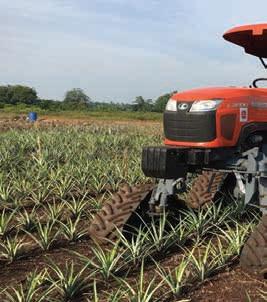
The use of automatic index system to determine the flatness of land
and enhanced technological knowledge, new, short maturity rice varieties that allowed for double cropping annually were developed. Improved irrigation systems, high germination percentages and mechanisation for work from land tilling to harvesting, resulted in the production of high yield inbred and hybrid varieties with good resistance and eating quality. These included MR219, MR303, MR307 and MR279 as well as the currently more popular varieties of MR220, CL1 and CL2. Datuk Dr Roff says the government is encouraging rice farmers to plant these varieties as they will be entitled for subsidies such as fertilisers and pesticides as well as greater support from the government in terms of pricing. In 2019, the total land area for padi planting was 689,268 hectares, of which 90% were planted with MARDI rice varieties. “In terms of varietal development, we have also developed specialty rice including basmati (MRQ74) and fragrant rice (MRQ76),” he adds.
Besides focusing on rice varietal development, MARDI also emphasises on R&D work which covers the full spectrum of rice production system and nutrient management, pest and disease management, post-harvest management, mechanisation and automation, seed production and biodiversity.
“In rice cultivation and production, we look into good harvesting practices, which have seen significant improvements. In 1985, losses from
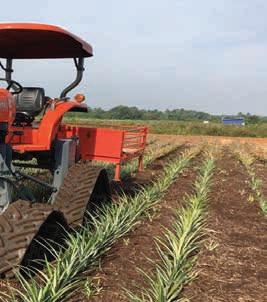

the harvesting stage to transportation and milling was 28.5%. In 2016, we reduced this to 7.9%. We aim to reduce this further,” says Datuk Dr Roff.
An important contribution by MARDI was the successful production of 150kg of rice foundation seeds which were sold to nine companies approved by MOA. These companies then produced 4,000 metric tonnes of registered seeds annually, followed by the production of 72,000 metric tonnes of certified seeds which were distributed to and used by farmers throughout the country. Datuk Dr Roff says MARDI issues Standard Operating Procedures for the rice industry service providers by providing them with the necessary training to ensure successful delivery.
HORTICULTURE CROPS AND LIVESTOCK PRODUCTS DEVELOPMENT
Apart from rice, MARDI has also made developments in horticulture crops such as papaya, pineapple and rambutan. Its papaya variety, Exotica, is exported to Hong Kong and the Middle East, while its popular Josephine pineapple (a cross between Johor and Sarawak pineapple) is exported to the Middle
East, Canada, Europe and Hong Kong.
In 2018, MARDI launched two rambutan varieties, Mutiara Wangi and Mutiara Merah, which were also of export quality. At the development stage, research respondents regarded these new varieties as superior to the currently popular rambutan Anak Sekolah. Datuk Dr Roff foresees both Mutiara varieties overtaking Anak Sekolah in popularity.
As for livestock, he takes pride in MARDI’s development of the popular Omega LTK designer eggs. “We are now working with the industry to develop the highly demanded ayam kampung and will again work with the industry to push it in the market,” he adds.
Datuk Dr Roff stresses that MARDI will place greater emphasis on agricultural sustainability, which rests on the principle that the country must meet the needs of the present without compromising the ability of future generations to meet their own needs. MARDI will continue to be part and parcel of Malaysia’s long-term plans to advance the agro-food sector, with greater focus on consumer health and safety both in the present and the future.
Tractors are now used in pineapple farms
Industry 4.0 concept in the agricultural crops production
Source: MARDI
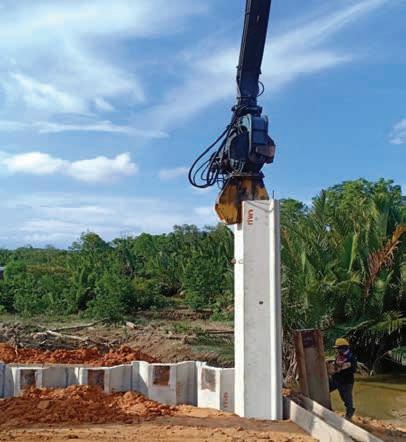
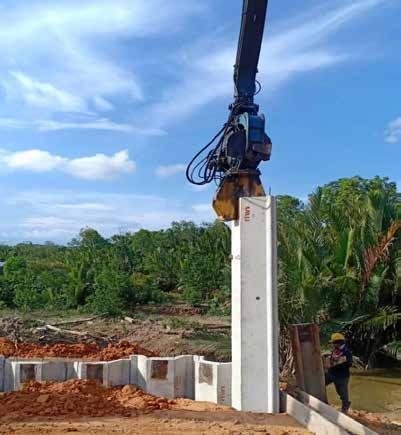



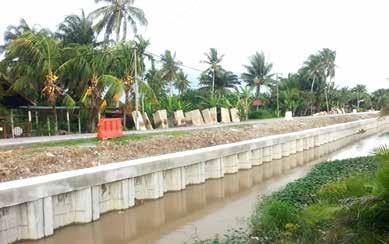

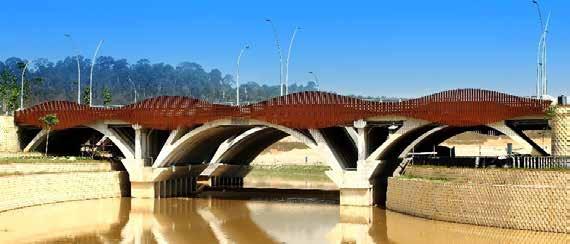
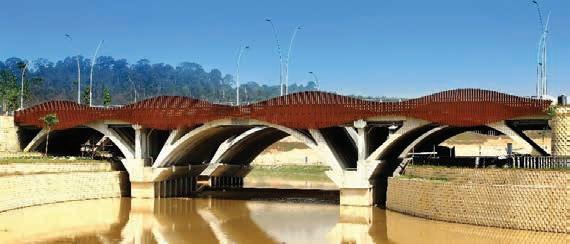

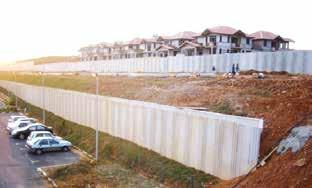


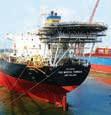
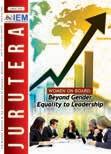







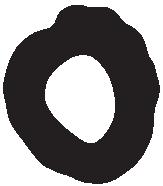








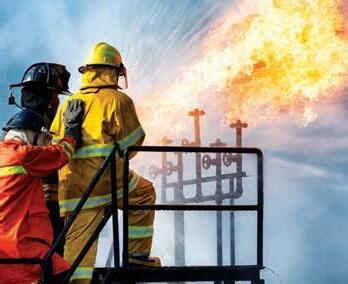
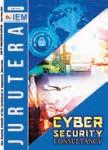















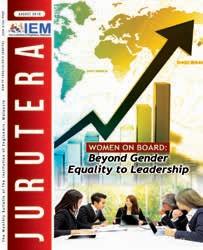
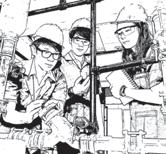





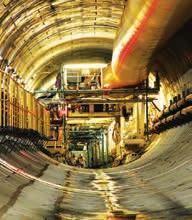
Fire Safety Management




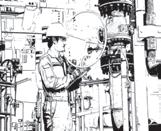












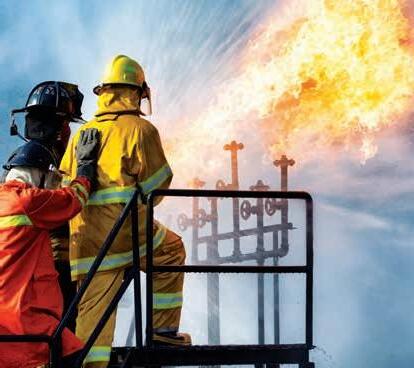





THE MONTHLY BULLETIN OF THE INSTITUTION OF ENGINEERS, MALAYSIA
JURUTER A

Circulation and Readership Profile
Advertising Benefits






JURUTERA has an estimated readership of 200,000 professionals. Our esteemed readership consists of certified engineers, decision making corporate leaders, CEOs, government officials, project directors, entrepreneurs, project consultants, engineering consulting firms and companies involved with engineering products and services.


Our business partners can be assured that their products and services will be given the circulation and exposure they deserve, thus maintaining a sustained advertising presence to our core readers of decision-making engineers and technical experts. Our website offers an even wider market reach, with added international presence, aided by our international affiliation with official engineering bodies all over the world. Our online and offline advertising features such as banner advertising, article sponsorship and direct e-mail announcements have proven to be successful marketing strategies that will set the businesses of our partners apart from their competition.
ADVERTISING RATES








ICE CREAM: FROM GASTRONOMY TO ENGINEERING

by Dr Nur ‘Aliaa Abd Rahman
Ice cream is one of the most popular desserts in the world and the global ice cream market is forecasted to grow at a compound annual growth rate (CAGR) of 4.9% from 2020 until 2025 (Mordor Intelligence, 2020).
In its broadest sense, the term “ice cream” covers a wide range of frozen dessert. The main ones are dairy ice cream, non-dairy ice cream, gelato, frozen yoghurt, milk ice, sorbet, sherbet, water ice and fruit ice (Clarke, 2012). What all these have in common is that they are sweetened, flavoured, contain ice and, unlike any other frozen food, are normally eaten in a frozen state.
Today, ice cream is found in almost any restaurant or corner store and is recognised globally as the perfect summer treat. It can be categorised based on fat content, i.e. low-fat (3-5% fat), light (6-8%) and hard/soft frozen ice cream (more than 10% fat) (Parid et. al., 2020).
Generally, ice cream is a complex food which is sometimes called frozen aerated emulsion (oil in water) and consists of partially coalesced fat globules, air bubbles, ice crystals and unfrozen serum, together with polysaccharides contents, mineral salts, proteins and water as the main ingredients.
The ingredients are the main factors that affect the development of the desired structure, texture, dryness, shape retention after freezing process, melting and smoothness after hardening as well as palatability of the final product (Akbari et al., 2019). Apart from the ingredients, the steps involved in ice cream production –critical pasteurisation, homogenisation, ageing, freezing and hardening processes – are important factors which determine the quality of the ice cream.
The science of ice cream consists of understanding the ingredients, processing, microstructure, texture and crucially, the links between these (Clarke, 2004). It has been called “just about the most complex food colloid of all”, because it’s an extremely complex, intricate and delicate substance. The ingredients and processing create the microstructure.
GASTRONOMY OF ICE CREAM
In Malaysia, consumption trends have evolved from traditional ice confections made by simply freezing a mixture of flavoured syrup and water, to churned gelato and premium artisanal ice cream. Consumer lifestyles today have given rise to different types of ice cream being sold in shops and via online platforms. International premium brands such as Häagen-Dazs, Baskin Robbins and Ben & Jerry have been in our market for a long time and now, there are local premium ice cream brands too, such as The Ice-Cream Project, Softsrve and Inside Scoop (TallyPress, 2016).
Typically, ice cream has more than 10% milk fat by legal definition and generally between 10% and 16% fat in some premium ice creams, 9-12% milk-solid-non-fat (also known as serum solids) which consists of proteins (caseins and whey proteins) and carbohydrates (lactose) found in milk, 12-16% sweeteners or sweetening agents (usually a combination of sucrose and glucose-based corn syrup sweeteners), 0.2-0.5% stabilisers and emulsifiers and 5564% water, which comes from milk or other ingredients (Clarke, 2004; Goff, 2020).
Almost all local ice cream manufacturers use palm oil as their source of fat. Ice cream made with palm oil has a rich texture and a shiny appearance, two preferred attributes of ice cream. By adjusting the percentage of palm oil content, manufacturers are able to produce premium ice cream at a lower cost than if they are to use fat from dairy sources.
In 2019, the Malaysian Palm Oil Council (MPOC) organised a road tour called Love My Palm Oil Carnival which also promoted an innovation by a research team from the Department of Process & Food Engineering, Universiti Putra Malaysia. Red palm oil was used as one of the ingredients in ice cream.
The team, Putra Creamery, led by the author, Dr Nur ‘Aliaa Abd Rahman, infused red palm oil into the ice cream formulation which was based on their innovation of
instant ice cream mix powder and turned it into a creamy and delicious soft serve ice cream. The vitamins and beta-carotene rich red palm oil contributed to the creamy texture and appetising appearance of the ice cream.
Apart from texture, the taste of ice cream is extremely important too. To promote good health, manufacturers use real fruits such as durian, jackfruit, coconut and mango to flavour their ice cream. In 2016, Dr Nur ‘Aliaa
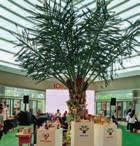
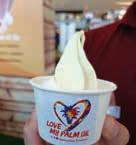

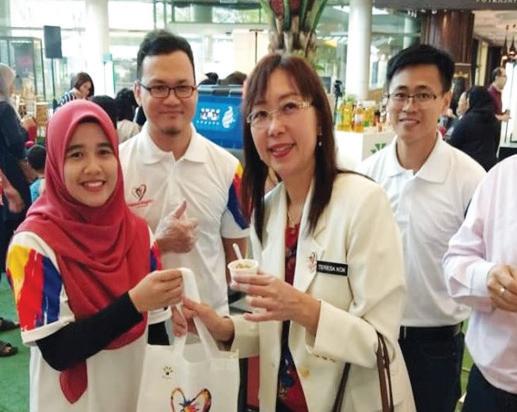
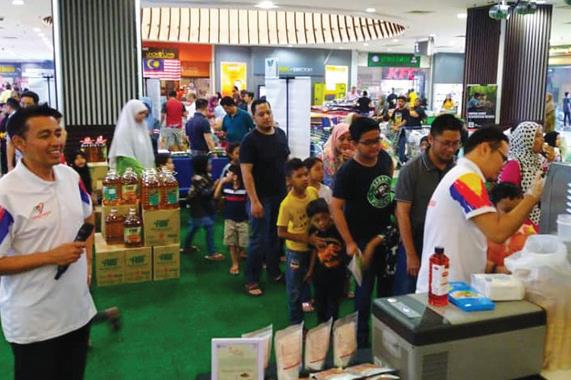

BH GIRDER

The BH Girder is an innovative and enhanced version of PSC Girder that utilizes the Bulb-T shape integrated with Half Slab which enables it to be applied over a span of longer than 60m. By adopting the latest cutting-edge technologies and innovation, the BH Girder has been designed to achieve the ultimate goals of “Cost E ectiveness”, “Rapid Construction”, “Aesthetics” and “Safety ”.

ADVANTAGES

Efficiency

Maximization of prestressing e ciency
Minimization of prestressing
Reduction of substructure cost
Reduction of slab cost by half slab girder
Omission of deck slab formwork and shoring work by half slab girder Shorter construction period
Constructability

PROFESSIONAL SERVICES
Design computations and analysis
Construction drawings
Material and construction speci cations
Cost estimates
Technical advice and construction assistance
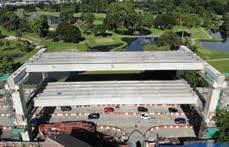
No. 45-3, Jalan PJU 5/20, The Strand, Kota Damansara 47810 Petaling Jaya, Selangor Darul Ehsan.
Tel : 017 355 1451 (Teoh Khai Keat)
Tel : 603 6142 6638
Fax : 603 6142 6693
Email : tancc@nehemiah-grp.com

A partnership of
Email : teohkk@nehemiah-grp.com
Email : enquiry@nehemiah-grp.com

Soft serve ice cream made with red palm oil at Love My Palm Oil Carnival organised by MPOC
At the Love My Palm Oil Carnival organised by MPOC

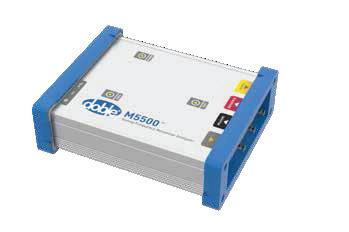


Heating of liquid mixture up to 80oC and holding for 15 seconds
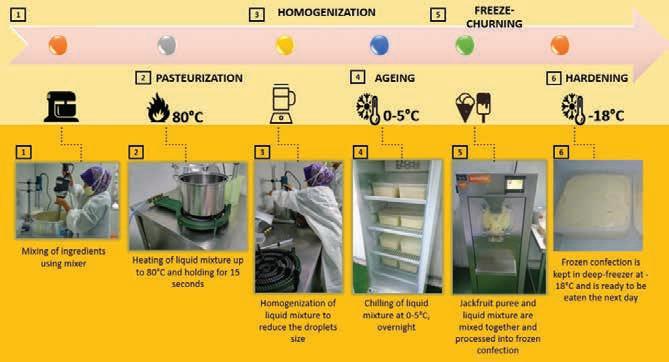
Homogenization of liquid mixture to reduce the droplets size
helped the Pahang State Farmers Association (PASFA) convert a surplus of jackfruit (Mastura J37 variety) into ice cream (Johari et al., 2020).
ENGINEERING TEXTURAL MEASUREMENT OF ICE CREAM
Desirable ice cream texture is one that’s not too firm nor too slushy. The measurement of texture can be somewhat
Chilling of liquid mixture at 0-5oC, overnight
Jackfruit puree and liquid mixture are mixed together and processed into frozen confection
Frozen confection is kept in deepfreezer at 18oC and is ready to be eaten the next day
challenging because of the temperature sensitivity of ice cream. It is necessary to avoid melting during sample preparation (Clarke, 2004), wherein any change in the temperature will affect the structure and mechanical properties of ice cream (Leducq et al., 2015).
Dr Nur ‘Aliaa and her team established a technique to measure the texture of ice cream in-situ inside a freezer by using a mini compression tester made with Lego
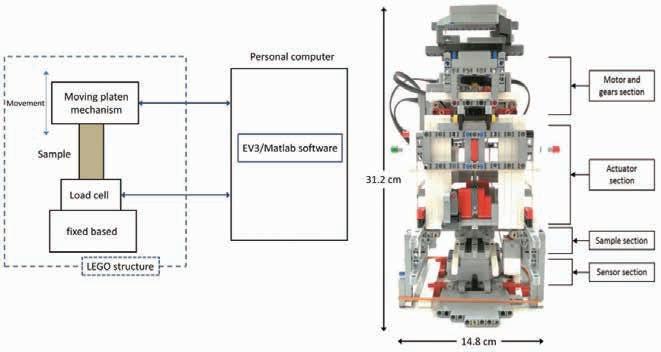
Processing Mastura J37 jackfruit ice cream (Johari, 2020)
FEATURE
(Rahman et al., 2019). In this study, a miniature texture test device was developed to overcome this limitation while performing the experimental work using the commercial mechanical compression test device. The device had to be placed inside the freezer for conducting the tests under temperatures of −20°C. The device comprised the Lego EV3 Mindstorm motor mechanism for sample movement under compression and a miniature load cell (FUTEK LSB200, USA).
The measurement done was able to produce data which could be translated into viscoelasticity of ice cream. The test device was able to replicate the test results conducted with a more expensive commercial mechanical test device. The mini compression test was able to imitate the movement of ice cream in the mouth, which was interesting in relating the gastronomy and engineering aspects during food consumption.
HANDLING OF ICE CREAM BY-PRODUCT
Food sustainability is very important nowadays, not only to ensure all raw materials are converted into food for consumption but also to recycle leftover food. Apart from studying the conversion of wastewater created during ice cream post-production in a factory (Enteshari and Martinez-Monteagudo, 2018), a solution was also needed to handle leftover ice cream, if any.
An innovated product created with leftover or unfinished food is a good alternative to throwing it away. Dr Nur ‘Aliaa and her team conducted a study to convert leftover ice cream into cake. The formulated cake had properties comparable to conventional ones, based on the physical and sensory evaluations conducted (Jamaluddin, 2020). The use of leftover ice cream as the base ingredient to make other foods would be a tremendous help in solving food waste created by the ice cream business and turning it into profit.
SAFETY ASPECT IN ICE CREAM PRODUCTION
The biological control point during ice cream processing is pasteurisation which is required to destroy pathogenic microorganisms, thereby safeguarding the health of consumers (Marshall & Arbuckle, 2000). It reduces the number of spoilage organisms such as psychotrophs and helps to hydrate some of the components such as proteins and stabilisers.
There are two basic methods: Batch or low-temperature long-time (LTLT) and continuous or high-temperature shorttime (HTST).
Batch pasteurisation is done by heating the ice cream mix in large jacketed vats equipped with some means of heating, usually steam or hot water to at least 69°C and held for 30 minutes to satisfy legal requirements for pasteurisation. Continuous pasteurisation is usually performed in a heat exchanger at 80°C for 25 seconds. Other than eliminating the pathogens, pasteurisation also aids in blending by melting the fat and decreasing the viscosity.
CONCLUSION
Knowledge of the interaction between gastronomy and engineering aspects of ice cream is interesting and important for those dealing in ice cream research and production, to create a total solution for the whole system. As the manufacturing technology and innovation of ice cream products continue to evolve, beneficial and profitable opportunities are being created for everyone in the field.
REFERENCES
[1] Akbari, M., Eskandari, M.H. & Davoudi, Z. (2019). Application and Functions of Fat Replacers in Low-Fat Ice Cream: A Review. Trends in Food Science & Technology, 86: 34-40. https://doi.org/10.1016/j. tifs.2019.02.036
[2] Clarke, C. (2004). The Science of Ice Cream. Cambridge, UK: The Royal Society of Chemistry.
[3] Clarke, C. (2012). The Science of Ice Cream, 2nd ed.; The Royal Society of Chemistry, UK.
[4] Dickinson, E. (1992). An Introduction to Food Colloids. Oxford University Press.
[5] Enteshari, M. & Martinez-Monteagudo, S.I. (2018). Subcritical hydrolysis of ice-cream wastewater: Modeling and functional properties of hydrolysate. Food and Bioproducts Processing, 111: 104-113. https://doi.org/10.1016/j.fbp.2018.08.002
[6] Goff, H.D. (2020). Ice cream ingredients. Dairy Science and Technology Education. Accessed on 13th August 2020. Available from: https://www. uoguelph.ca/foodscience/book-page/ice-cream-mix-ingredients
[7] Jamaludin, N.S. (2020). Conversion of Unutilized Ice Cream from Production Process into Value-Added Product. Final Year Project Thesis. Universiti Putra Malaysia.
[8] Johari, A.M. (2020). Application of Low Temperature Storage of Mastura (J37) Jackfruit Bulbs on Ice Confectionery Processing. Master’s Thesis. Universiti Putra Malaysia.
[9] Johari, A.M., Rahman, N.A.A., Baharuddin, A.S., Kadir Basha, R., Mohammed, M.A.P., Parid, D.M., Abdul Razak, S.Z. & Wakisaka, M. (2020). Effects of low temperature storage of Mastura (J37) jackfruit bulbs on the physical quality of jackfruit frozen confection. Journal of Agricultural and Food Engineering, 1: 1-6. http://doi. org/10.37865/jafe.2020.0009
[10] Marshall, R.T. and Arbuckle, W.S. (2000). Ice Cream (Fifth Edition). 5 Edn.: Aspen Publishers, Inc.
[11] Mordor Intelligence (2020). Ice cream market - growth, trends, and forecasts (2020 - 2025). Available online: https://www. mordorintelligence.com/industry-reports/ice-cream-market (accessed on August 13, 2020).
[12] Parid, D.M., Rahman, N.A.A., Baharuddin, A.S., Kadir Basha, R., P. Mohammed, M.A., Mat Johari, A., Abd Razak, S.Z. (2020). Effects of carboxymethyl cellulose extracted from oil palm empty fruit bunch stalk fibers on the physical properties of low-fat ice cream. Food Research, In Press.
[13] Rahman, N.A.A., Parid, D.M., Razak, S.Z.A, Johari, A.M., Talib, A.T., Mohammed, M.A.P., Baharuddin, A.S., Wakisaka, M. (2019). In-situ viscoelastic characterization and modeling of ice cream. Journal of Food Engineering, 263: 96-101. https://doi.org/10.1016/j. jfoodeng.2019.05.039
[14] TallyPress (2016). Malaysia’s Top 10 Local Ice Cream Brands. Available online: https://tallypress.com/malaysia-top-10s/malaysiastop-10-local-ice-cream-brands/ (accessed on August 13, 2020).
Author’s Biodata
Dr Nur ‘Aliaa Abd Rahman is a senior lecturer in the Department of Process & Food Engineering, Faculty of Engineering, UPM. She is Director of a spin-off company doing ice cream formulation and manufacturing under UPM InnoHub programme.




LOVE THE GREENS, FILTER THE WASTE

by
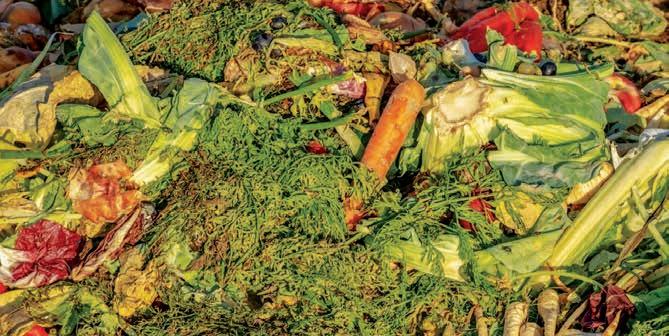
The current world population of 7 billion is estimated to grow to over 9 billion by 2050. This means there will be an increasing demand for food. Humans consume about 72 billion metric tonnes of food materials per annum; unfortunately, one-third of this is lost or wasted.
Most food waste is in the food processing and agricultural industries. The current global production of fruit and vegetables is recorded at 1.74 billion metric tonnes but more than 50% of the total production loss is primarily due to harvesting and processing activities. Waste consists of fruit and vegetable trimmings, peelings, stems, seeds, shells, cereal residues (such as bran), starch, sugar and juice extraction and off-spec or damaged products. This waste is organic in nature and may cause soil and water pollution. The waste can also lead to greenhouse gas emission, a serious environmental issue.
The conversion of agro-food waste into useful byproducts of higher value or for use as raw material in other
industries as well as food or feed/fodder after biological treatment, is a potential avenue for turning waste into profit.
Based on the points given, bioconversion of agrofood industry residues is an attractive environmental sustainability solution since these residual matters can be potentially converted into useful products. Recently, there are numerous reports on waste utilisation, especially waste from fruit and vegetables, for further industrial processes including fermentation and bioactive compounds extraction. Some high-value compounds can be extracted from the agricultural and food wastes such as proteins, antioxidants, phenolic compounds, polysaccharides, fibre, flavour compounds and phytochemical ingredients. These potentially marketable compounds can be used in various applications such as pharmaceutical, cosmetic, food and non-food areas.
The recovery of these high-value compounds is a smart way to utilise waste streams, as well as being economically
Dr Mohd Zuhair Mohd Nor
Typical agro-food waste1
attractive. Nevertheless, methods of extraction and purification using hot water, solvents, enzymes, irradiation, adsorption, ultrasound, supercritical fluid or chromatography, among others, have not produced feasible positive results, mostly due to the incapacity for large-scale production, use of non-biocompatible chemicals, high cost and difficulty in obtaining high bioactive compounds recovery in the final mixture. As the extraction and purification process represents up to 80% of the total production cost, a suitable technique for big-scale bioactive compounds production should be chemical-free, economically viable, highly efficient and practical.
MEMBRANE FILTRATION TECHNOLOGY
Membrane filtration is a promising alternative as this is a green, up-scalable and high-throughput technology that requires minimal production cost. It is suitable for bioactive compounds extraction and purification due to its outstanding ability in size and/or charge-based component separation with high purity and throughput. In general, membrane filtration is a separation process of particulate matters in a liquid by using semi-permeable materials. It is a pressure-driven process that can be classified as either microfiltration (MF), ultrafiltration (UF), nanofiltration (NF) or reverse osmosis (RO), depending on the membrane pore size (Figure 1). The membrane pore size is determined by
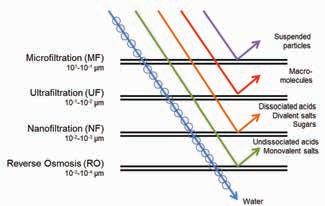
the absolute size of the rejected particles (normally in µm). Besides, the membrane pore size can also be classified according to molecular weight cut off (MWCO) which is defined as the lowest solute molecular weight that can reach 90% membrane retention and is typically expressed in Dalton (Da) unit.
A membrane process involves the separation of feed into permeate and retentate. Feed is the raw sample that needs to be filtered. Permeate is the portion of the fluid which passes through the membrane while the remainder in the feed stream is called retentate. The retentate contains a high component concentration retained by the membrane.
APPLICATIONS OF MEMBRANE FILTRATION FOR BIOACTIVE COMPOUNDS SEPARATION
Due to its unique size separation principle, the pressuredriven membrane technology is used for the recovery of high-added-value compounds from agro-food by-products. These compounds come in different sizes. Figure 2 shows some of the various compositions and their respective size groups typically existing in agro-food waste. The separation of these compounds by the membrane process can be adjusted according to size.
Depending on the size of the targeted bioactive compounds, the membrane system can be set up at multistage to separate those compounds (Figure 3). To separate compounds of different sizes, the membrane process may involve the combination of different membrane types, i.e. MF, UF or NF. The targeted compounds may be separated in the permeate or retentate stream, depending on the operation set-up.
There have been many reports on the success of using the membrane process for extraction and purification of different compounds from agro-food waste such as enzymes (e.g. bromelain from pineapple waste), polysaccharides (e.g. pectin from citrus fruit) and phenolic contents (e.g. anthocyanins and flavonoids) from agro-food wastes such as orange press liquor, olive mill wastewater, artichoke wastewater, soya processing and grape pomace.
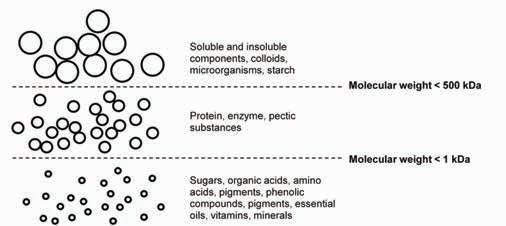
Figure 1: Different types of membrane filtration2
Figure 2: Molecular weights of various compositions in plant extract3
FEATURE
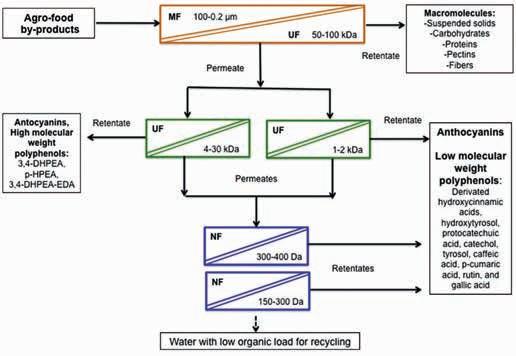
Agro-food by-products
Anthocyanins
High molecular weight polyphenols: 3,4-DHPEA, p-HPEA, 3,4-DHPEA-EDA
Retentate
Retentate
Retentate
Macromolecules:
- Suspended solids
- Carbohydrates - Proteins
- Pectins
- Fibers
Anthocyanins
Low molecular weight polyphenols: Derivated hydroxycinnamic acids, hydroxytyrosol, protocatechuic acid, catechol, tyrosol, caffeic acid, p-cumaric acid, rutin, and gallic acid
Successful membrane processing depends on two keys: Flux profile (indicated by the filtration rate of the membrane) and separation efficiency (reflected by the recovery and purity of the separated compounds). For these two to work as desired, the following factors need to be considered (Figure 4).
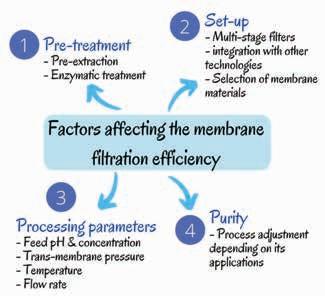
1. Pre-treatment: Agro-food waste needs to be preextracted to get the raw liquid extract. Typically, this extract may consist of various compounds including soluble and insoluble complexes, colloids, microorganisms and starch, so pre-treatment such as course filtering process and enzyme treatment may be necessary to remove unwanted large compounds. Normally, the raw extract of the agro-food waste will be treated with pectinase and cellulase enzyme to hydrolyse polysaccharides which may cause a blockage (known as fouling) on the membrane surface during the membrane filtration process.
2. Operation set-up: To ensure the filtration process is successful, multi-stage membrane processing should be arranged according to the molecular sizes of the targeted bioactive compounds. This may involve a few stages of microfiltration, ultrafiltration and nanofiltration. A further concentration step by reverse osmosis stage is also possible to prepare the bioactive-rich extract for the drying process. Besides, to achieve a higher purity of the targeted compounds, the membrane set-up can be integrated with other purification technologies such as aqueous two-phase or reverse micellar system. Membrane configuration and material are also important factors to ensure a high separation efficiency. Membrane configuration refers to the geometry shape and position of the filter such as plate-and-frame, spiral wound, tubular and hollow fibre. The membrane may
Figure 4: Factors affecting membrane filtration efficiency for the separation of bioactive compounds from agro-food waste
Figure 3: Fractionation of agro-food wastes with a suggested integrated membrane system4
Retentates
Water with low organic load for recycling
Permeate
Permeates
be of polymeric materials such as polysulfone, polyvinyl fluorite and cellulose acetate or ceramic membranes such as alumina (α-Al2O3 and β-Al2O3), zirconia (ZrO2), titania (TiO2), glass (SiO2) and silicon carbide (SiC). The selection of the membrane configuration and material depends on the feed properties, processing pressure, temperature and chemical compatibility.
3. Processing parameters: Several processing parameters such as feed pH, feed concentration, trans-membrane pressure, processing temperature, flow rate and crossflow velocity will affect the filtration rate of a membrane process. As lower viscosity will favour a better filtration rate, the feed pH can be adjusted away from its natural isoelectric point to reduce its viscosity. The viscosity can also be reduced by increasing the processing temperature. However, the stability of the targeted bioactive compounds must be considered if the process is performed at an elevated temperature. Higher transmembrane pressure, flow rate and cross-flow velocity will normally lead to a higher filtration rate, up to the critical limits. However, the effect of the high shearing condition may impact the stability of the bioactive compounds. Hence some limitations should be considered.
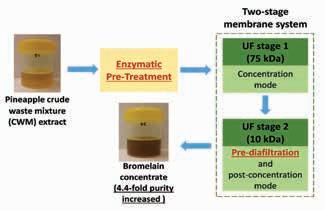
4. Bioactive component purity considerations: The main purpose of the extraction and purification stage is to separate and increase the purity of the targeted bioactive compounds. By using the membrane process, the purity of the compounds is expected to increase, depending on the separation process efficiency. For example, bromelain enzyme purity can be increased up to 4.4-fold by using a two-stage ultrafiltration (Figure 5).
The purity is expected to further increase if the membrane process is combined with other purification technologies. Nevertheless, since some applications do not have a high purity requirement, the purification process can be adjusted depending on the destination of the separated bioactive compounds.
CONCLUSION
Despite the promising potential of membrane filtration for the extraction of bioactive compounds from agro-food waste, some limitations have been identified, including a long separation process, membrane fouling and low purity compared to other purification technologies. These limitations require further exploration to fill the gaps in this area, such as by understanding the composition and properties of the agro-food waste extract to relate to the functional membrane properties.
Economic consideration such as production cost should also be highlighted. Nevertheless, the application of membrane technology on an industrial scale is possible because it has been well established in the water treatment industry. The technology has a promising future in the utilisation of agro-food waste for the production of bioactive compounds. As the industry progresses, it is up to us to manage food waste properly to ensure a sustainable environment and to protect Mother Nature. So, love our greens but do not forget to filter the waste.
REFERENCES
[1] https://pixabay .com/photos/compost-garbage-biologicalwaste-3663514/
[2] Nor, M. Z. M (2017). Membrane based process for the extraction of bromelain from pineapple waste [Doctoral dissertation, Victoria University]
[3] Nor, M. Z. M., Ramchandran, L., Duke, M., & Vasiljevic, T. (2017). Application of membrane-based technology for purification of bromelain. International Food Research Journal, 24(4), 1685-1696.
[4] Castro-Muñoz, R., Yáñez-Fernández, J., & Fíla, V. (2016). Phenolic compounds recovered from agro-food by-products using membrane technologies: An overview. Food chemistry, 213, 753-762
[5] Nor, M. Z. M., Ramchandran, L., Duke, M., & Vasiljevic, T. (2018). Performance of a Two-Stage Membrane System for Bromelain Separation from Pineapple Waste Mixture as Impacted by Enzymatic Pretreatment and Diafiltration. Food Technology and Biotechnology, 56(2), 218-227.
Author’s Biodata
Dr Mohd Zuhair Mohd Nor is senior lecturer at the Department of Process & Food Engineering, Faculty of Engineering, UPM. He is also an interim researcher at Halal Products Research Institute, UPM.
Figure 5: Bromelain enzyme purification from pineapple waste through membrane processing5

Until 30 September 2020 Flyer / Leaflet
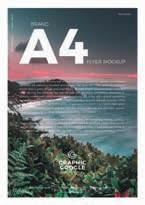


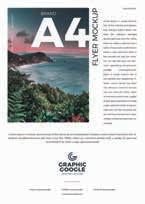



RM130
RM160
RM160
RM190
RM100
RM130
RM130
Until



Subscribe to IEM’s Publications Now!
Yes! I would like to be a subscriber of The Institution of Engineers, Malaysia’s publications
Name: _________________________________________________________________________________________________________
Mailing Address: _________________________________________________________________________________________________
Country: ________________________
Company/Institution: ______________________________________________________________________________________________
Title: ____________________________________________________________________________________________________
Telephone No: _________________________ Fax: _________________________ Email: _________________________________
New Subscriber Renewal
Please commence my subscription from: _________________________(month/year) Signature: _______________________________
To start your subscription of IEM’s publications, complete this form and mail it back to the address below. For faster processing, fax it to: +603 7493 1047. Thank you.
What is your primary job title?
Corporate Management (including chairman, president, proprietor, partner, director, vice president, general manager, division manager, import/export manager, other corporate title)
Management (including project/contract/equipment/service/transport district manager, clerk of works, other technical or operating manager)
Engineering/Design (including chief engineer, chief designer, civil/ highway/mechanical/planning engineer, other engineering/design title)
Buying/Purchasing (including chief buyer, buyer, purchasing officer, other buying/purchasing title)
Titles allied to the field (architect, consultant, surveyor, research and development professor, lecturer, supervisor, superintendent, inspector or other allied title)
Others (please specify) ____________________________
What type of organisation do you work in? (Tick one box only)
Contractor
Sub-contractor specialist
Design and build contractor
Consulting engineering/architectural/quantity surveying practice
Mining/quarrying/aggregate production company
Petroleum producer
International/national authorities
National/regional/local government
Public utilities (electricity, gas, water, deck and harbour, other)
Manufacturer
Distributor/importer/agent
Construction department of large industrial/Commercial concern
Association/education establishment/research
Construction equipment hire/rental company
Project/construction management consultancy
Others (please specify) _______________________________
What are the main activities of your organisation? (Tick all that apply)
Constructions of:
Roads/bridges

Manufacturer of:
Construction equipment
Dams/reservoirs/irrigation Cement
Harbours/offshore structures Other construction materials
Foundations/tunnels Distribution Pipelines/refineries Construction equipment
Structures/steel work
Construction materials
Building (commercial, industrial) Hire/rental of construction equipment
Housing Design
Construction management Earth-moving/open cast mining
Deep mining Aggregate production
Others (Please specify) _________________________________________
Rate (Please tick)
RM360.00 - 12 issues of JURUTERA
RM84.00 - 2 issues IEM Journal (Half-yearly)
Terms and Conditions:
1) The subscription is to be prepaid.
2) Please make cheque payable to Dimension Publishing Sdn. Bhd.
3) Subscriptions are not refundable.
4) Magazine/s will be sent to the mailing address given.
5) Students are entitled for a 20% discount from the above subscription rate.
6) Students must submit a photocopy of the student identification card together with the payment.
7) The above rate is inclusive of delivery charges and applicable in Malaysia only.
8) Additional delivery charges will apply to overseas subscribers.
For subscription enquiries, please contact +603-7493 1049 or email to info@dimensionpublishing.com
BIOGAS CAPTURE & CONVERSION INTO BIO-CNG IN PALM OIL SECTOR

by Ir. Ooi Ho Seng
On 28 July 2020, the Agricultural & Food Engineering Technical Division organised a webinar on “Overview of Biogas Capture & Conversion into Bio-CNG in Palm Oil Sector”.
The session was present by Ir. Ooi Ho Seng and moderated by Ir. Goh Su Kin. The following is a summary of the webinar.
EMISSION OF BIOGAS & BIOGAS CAPTURE
Biogas is produced when organic matter in POME (palm oil mill effluent) breaks down anaerobically and is released to the atmosphere. Biogas comprises 50-70% methane (CH4), 30-45% carbon dioxide (CO2), 1500-2500 ppm hydrogen sulphide (H2S), traces of moisture and other minor impurities. The first-generation biogas plants were designed primarily for biogas capture to reduce the emission of greenhouse gas (GHG). All palm oil mills in Malaysia were required to install biogas capture system by 2020.
BIOGAS PRODUCTION & CONVERSION TO BIOPOWER
Second-generation biogas plants are designed to maximise biogas production. Production of biogas is increased through the optimisation of the four processes involved in the anaerobic digestion of POME, namely hydrolysis, acidogenesis, acetogenesis and methanogenesis.
After it is scrubbed to remove hydrogen sulphide (H2S), biogas is combusted in a gas engine to generate electricity (bio-power) which can be sold to the national grid as presented in Figure 1.
Feed-in-tariff programme and other incentives are being provided by the government to support the generation of electricity (conversion of biogas into biopower) through SEDA (Sustainable Energy Development Authority).
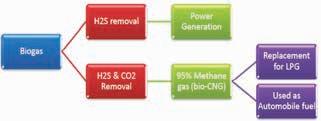
1: Conversion of biogas into bio-power or bio-CNG
BIOGAS PRODUCTION & CONVERSION TO BIOCNG
Biogas can also be converted into bio-CNG. Biogas is scrubbed to remove hydrogen sulphide and moisture. Then carbon dioxide is removed to attain a purity of 94% methane. The purified gas is then compressed at 250bar into bio-CNG.
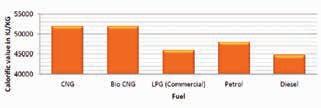
2: Calorific values of bio-CNG and other fuels
Bio-CNG has a calorific value equivalent to that of CNG (compressed natural gas) as shown in Figure 2. It has all the properties and benefits of CNG. It is a green, renewable fuel and it can replace CNG and LPG (liquified petroleum gas) in the motoring, industrial and commercial sectors.
BIO-CNG PILOT PLANT
A bio-CNG pilot plant is located in Sungai Tengi, Kuala Kubu Baru, Selangor. Commercial testing was carried out since 2014, prior to a successful launch on 28 October 2015.
Figure
Figure
FORUM


Nehemiah Prestress
1140945-A



Nehemiah-OVM provides the following products and services:
- Post-tensioning solution provider
- Carpark Flat Slab
- Transfer Plate
- Beams, Box Girders
- Alternative design solutions
- Cable systems (stay cable, main cable, hanger)
- Bridge bearing and expansion joint
- Construction solutions (heavy lifting, ILM, etc)
- Monitoring, repairing and strengthening for structures





Head Office
Nehemiah Prestress Sdn Bhd 1140945-A No. 45-3, Jalan PJU 5/20
The Strand, Kota Damansara 47810 Petaling Jaya Selangor Darul Ehsan
Malaysia
Tel: (603) 6142 6638
Fax: (603) 6142 6693
Email: enquiry@nehemiahpt.com
Certified by the European Organization for Technical Approval

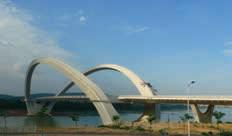
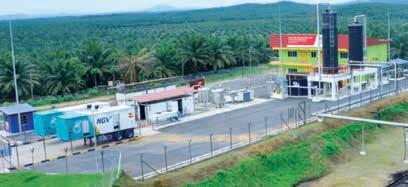
THE CHALLENGES
The challenges in bio-power production are:
• Location of mill not suitable for connection to grid
• Limited quota issued by SEDA
• High capital expenditure and operating expenses of biogas capture facilities.
The challenges in bio-CNG production are:
• High capital expenditure and operating expenses in biogas production
• High capital expenditure and operating expenses to purify and compress the biogas to produce bio-CNG
• Lack of market demand for the use of bio-CNG (to replace CNG) as motoring fuel
• Lack of government support, incentives and subsidies for the production and use of bio-CNG.
CONCLUSION
Oil palm plantations in remote areas often face problems in getting a regular supply of diesel and gasoline to generate energy for their own consumption. Converting the biogas into bio-CNG at the mills will give oil palm plantations owners independence and control of their energy needs.
UPCOMING ACTIVITIES
WEBINAR - Talk on Grid Connected Solar PV (GCPV) System
Date : 21 January 2021 (Thursday)
Time : 3.00 p.m. to 5.00 p.m.
Venue : Digital Platform
Approved CPD : 2
Speaker : Ir. Tan Seng Khee
WEBINAR - Introduction To Electrical Design In Building Services - Part 1
Date : 23 January 2021 (Saturday)
Time : 9.00 a.m. to 1.00 p.m.
Venue : Digital Platform
Approved CPD : 4
Speaker : Ir. Mohd Taufik bin Mohammed Rathi

WEBINAR - Introduction To Electrical Design In Building Services - Part 2
Date : 31 January 2021 (Sunday)
Time : 9.00 a.m. to 1.00 p.m.
Venue : Digital Platform
Approved CPD : 4
Speaker : Ir. Mohd Taufik bin Mohammed Rathi
Bio-CNG pilot plant in Sungai Tengi, Selangor




From general retail scenarios to high-end stores, the cameras o er retailers both quantitative and qualitative understanding of their customer tra c for e ective management and operation optimization.



Identification




AWARENESS OF HALAL FOR INDUSTRIAL SECTOR

by Ir. Prof. Dr Yus Aniza Yusof
The Agricultural & Food Engineering Technical Division (AFETD), supported by the Halal Products Research Institute (HPRI), Universiti Putra Malaysia (UPM), invited Dr Puziah Hashim to provide training on Awareness of Halal for the Industrial Sector on 4 November 2020. The half-day event was the first webinar training conducted by AFETD and was attended by 32 participants. With over 30 years’ experience in halal food, cosmetics and pharmaceuticals, Dr Puziah had conducted many public and inhouse training, consultancy and audit for the industrial sector in Malaysia. She had served on the panel approval committee for Halal Industry Development Corporation (HDC) and Selangor State Islamic Department (Jabatan Agama Islam Selangor, JAIS), was a researcher for Standard & Industrial Research Institute of Malaysia (SIRIM) and a research fellow at HPRI. Later, she was a freelance halal expert, trainer and auditor for various companies, including auditor for SIRIM QAS International and Department of Standard Malaysia (DSM).
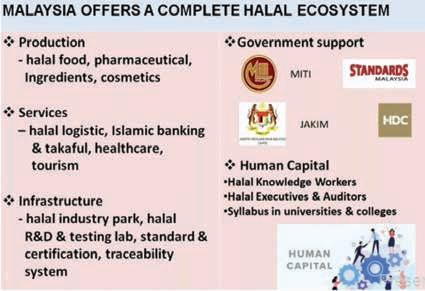
Her programme covered the halal market, basic Syariah Law, halal laws and an overview of Malaysia’s halal certification. The halal market looks at market demand and halal ecosystem. Globally, the demand for halal products is increasing and Malaysia has complete halal ecosystems which include production, services, infrastructure, government support and human capital to promote the industry. Among the production areas discussed were halal food, pharmaceuticals, ingredients and cosmetics industries. Scope of services was covered in the aspect of halal logistics,
Islamic banking and takaful, healthcare and tourism. Infrastructure was presented in terms of development of halal industry park, halal R&D and testing lab, standard and certification as well as traceability and system. Government support comprised encouragement and assistance from the Department of Islamic Development Malaysia (Jabatan Kemajuan Islam Malaysia, JAKIM), Ministry of International Trade and Industry (MITI), HDC and DSM. Human capital in the halal sector involved halal knowledge workers, halal executives and auditors. The development of a syllabus in universities and colleges related to halal studies was considered to be a contributing factor to human capital enhancement.
Basic Syariah and halal laws gave an insight into Syariah Law, source of Syariah Law, halal and toyyib, permitted sources, universal sources, types of najs, concept of maqasid al-syariah and principles of halal and haram.
One of the slides presented during the training session
Halal meant permissible for consumption and utilisation by Muslims. Toyyib meant good or wholesome such as having high quality, safety ensured (microbiologically safe, free from chemical, free from toxin, or free from other hazardous additives, or contaminant and physical hazards), hygienic and clean, nutritious, not adulterated (pure, genuine, authentic) and effective products. The idea of food and drinks, as well as ingredients permitted under Syariah Law were also presented. Classification of halal and haram food in Islam was also discussed in the aspects of animals (land and aquatic), plants, mushroom and microorganism, natural minerals and chemical elements, drinks and Genetically Modified Organisms (GMO). Halal slaughtering concepts, including livestock slaughtering and stunning, were discussed based on MS 1500:2009 Halal Food - Production, Preparation, Handling, and Storage - General Guidelines (Second Revision).
The overview of Malaysia’s halal certification covered halal certification Malaysia, certification body (JAKIM), halal logo or mark, and related regulations relating to halal certification and labelling (Trade description Act 2011, Food Regulation 1984, Control of Drugs and Cosmetics Regulation 2007, and Guidelines for Control of Cosmetic Products in Malaysia (2nd Rev) 2009). There are 7 halal certification schemes in Malaysia:
1. Food product/Beverages/Food supplement
2. Food premise/Hotel
3. Consumer goods
4. Cosmetic & personal care
5. Slaughterhouse
6. Pharmaceutical
7. Logistics.
The session also presented different categories of certification fees, conditions for certification, non-eligible applicants, application procedures, halal certification process flow, general requirements, conditions for the use of halal logo and certificate, examples of conformance and nonconformance offences, audit procedures, monitoring and enforcement.
UPCOMING ACTIVITIES
WEBINAR - 1-Day Virtual Workshop on “Introduction to Autocad”Rescheduled from 9 January 2021
Date : 30 January 2021 (Saturday)
Time : 9.00 a.m. to 5.00 p.m.
Venue : Digital Platform
Approved CPD : 0
Speaker : En. Mohamad Nazmi bin Ismail
WEBINAR - Talk on “Carbon Footprint Practices in Organisation”
Date : 3 February 2021 (Wednesday)
Time : 3.00 p.m. to 5.00 p.m.
Venue : Digital Platform
Approved CPD : 0
Speaker : Mr. Ahmad Rosly Abbas, Mrs. Radin Diana R. Ahmad & Mrs. Sazalina Zakaria
CHINT SUPERIOR SWITCHES




DIVERSITY & INCLUSION IN ENGINEERING EDUCATION

The World Federation of Engineering Organisation (WFEO) and the International Network of Women Engineers & Scientists (INWES) jointly hosted the Consultation Webinar on Diversity & Inclusion in Engineering Education on 31 July 2020 which attracted more than 100 participants worldwide. Ir. Prof. Dr Leong Wai Yie was an invited panellist.
The Science, Technology, Engineering & Mathematics (STEM) field is suffering from a lack of diversity. Yet there is growing evidence that more diverse organisations are more successful and effective. There is also a global shortage of manpower with STEM and engineering skills but this can be tackled by addressing the lack of diversity in the field.
One obvious way to view this problem is to look at gender. Women make up 50% of the population but in Engineering, the number of female students and professionals is clearly less than this and may only be about 10-25% in many parts of the world. This under-representation of women leads us to think about other groups that are under-represented in Engineering.
The webinar discussed a number of approaches to support diversity and inclusion so as to encourage a higher uptake of engineering by under-represented groups and to retain people in the sector.
The webinar brought together technical experts from WFEO, UNESCO, INWES and International Engineering Alliance to address the importance of diversity and inclusion in future engineering education and graduate attribute. All speakers agreed to instil these elements in the newly-revised engineering knowledge, syllabus, curriculum, attribute and teaching.
Teaching to engage diversity, to include all learners and to seek equity is essential for preparing civically engaged adults and for creating a campus and society that recognises the contributions of all people. Teaching for diversity refers to acknowledging a range of differences in the classroom. Teaching for
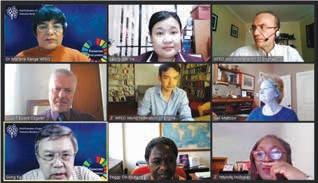
inclusion signifies embracing difference.
Teaching for equity allows the differences to transform the way we think, teach, learn and act such that all experiences and ways of being are handled with fairness and justice. These ideas complement each other and enhance educational opportunities for all students when simultaneously engaged.
Three imperatives make it essential for us to actively practise teaching for diversity, inclusion and equity. Diversity and inclusion improve teaching and learning. People learn and enrich their abilities to think critically and creatively as they engage in conversations across difference, especially when all learners’ abilities and attributes are embraced.
Inclusive teaching strategies are intended to ensure that all students feel supported such that they freely learn and explore new ideas, feel safe to express their views in a civil manner and are respected as individuals and members of groups.
Intentionally incorporating inclusive teaching strategies will help students view themselves as people who belong in the community of learners in classroom and university.
by Ir. Prof. Dr Leong Wai Yie
Front row: Left to Right: Marlene Kanga (WFEO Past President), Leong Wai Yie, Jacques de Mereuil (WFEO)
Second row: Bulent Ozguler (Chair UNESCO-WFEO-IEA Working Group), WFEO secretariat, Gail Mattson (INWES President)
Third row: Gong Ke (WFEO President), Peggy Oti-Boateng (UNESCO), Yetunde Holloway (WFEO-WiE)

Introductory Rate for New Advertisers

3,200/page RM 3,200/page
Full-Colour Advertisement
This one-time-only special rate o er is for new advertisers.
Space availability is subject to booking on a first-come-first-served basis.
Clients will provide ready-to-print artwork in PDF format with 300dpi.
Full page: 210mm x 285mm, 5mm extra bleed sizes for 4-sided with crop mark.
Advertising space must be utilised before 30 June 2021.
*Please note that the above rate will be subjected to 6% SST. For overseas advertisers, an additional 25% will be charged.
Rate shown above excludes 15% advertising agency commission.
Payment term: Full advance payment.
Artwork submission deadline is on (or before) the 1st week of the prior month of publication. After the material deadline, no cancellation or alteration to the advertisement will be entertained.
Any cancellation after signing the advertising order will result in a 50% penalty charge.
The publisher reserves the right to edit, revise or reject any advertisement deemed unsuitable or inappropriate.
JURUTERA has an estimated readership of 200,000 professionals. Our esteemed readership consists of certi ed engineers, decision making corporate leaders, CEOs, government o cials, project directors, entrepreneurs, project consultants, engineering consulting rms and companies involved with engineering products and services. Circulation & Readership Pro le
BEAN BAG SESSION WITH PETRONAS

by Ir. Ahmad Nazari Ashari, FIEM ACPE MIET P. Eng

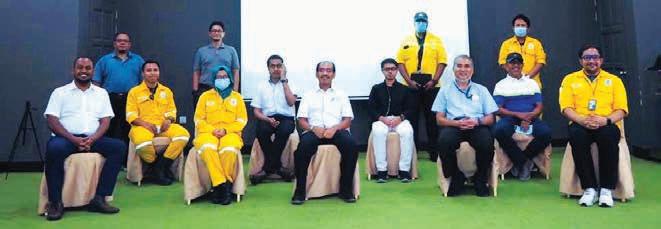
Group photo of participants who attended in person
Graduate engineers from PETRONAS Gas Bhd’s GPU YPC (PETRONAS Gas Processing & Utilities Unit Young Professionals Club) and IEM Terengganu branch held a bean bag session on Wednesday, 26 Aug 2020.
The term “bean bag” refers to a casual, unconventional learning environment where a large percentage of the time is allocated for information sharing between the participants as well as questions and answers. The session was preceded by a brief talk titled “Introduction to IEM” by Ir. Ahmad Nazari.
Another unconventional facet of the bean bag session was that it was also broadcast online via Microsoft Teams to about 15 participants. This was done via 3 video cameras which fed live video as well as a big projector screen which displayed the screen of one of the PCs in use. This simulated the experience of a live event for participants of the video conference. Indeed, the Senior GM of PGB GPU, Tuan Haji Zabidi Ahmad, delivered his opening speech on-line to all participants, from his office.
In his speech, he emphasised the significance of talented young executives to the growth and future of PETRONAS and how attaining professional recognition from an authorised body not only elevates their career prospects but will also boost self-confidence. He further encouraged members of the YPC to leverage professional
networking by using IEM as the platform as part of their continuous learning and contribution to the community.
The President of the GPU YPC, Cik Nur Zahidah, also gave a vibrant speech.
Then, during the Q&A session, a few salient matters were raised.
A fair percentage of the participants sought to clarify the roles of BEM and IEM, such as “Do I register with the BEM or the IEM?”
Some participants asked about their job scopes which were purportedly considered as “acceptable experiences”. These included: “I am doing project management and very little engineering work. Is that acceptable?”
A few participants questioned the rationale behind the eligibility for registration as an engineer, specifically those who had been rejected and who were prompted to register as technologists instead. They were disgruntled to learn that their route towards gaining a PE was now hindered because of the university degree courses they had completed.
One example was “I wanted to be an engineer. I enrolled to read for a degree in Bachelor of Engineering Technology in Manufacturing, only to find out after graduation that I do not qualify to be an engineer. This is not fair. Universities must make it clear to students before they accept them for these courses…..”
Ir. A. Karim A. Rahman, MIEM P. Eng
LOGO DESIGN CONTEST

by Ir. Goh Yong Sheng
IEM-UTM Student Section held an online logo design contest to encourage its members to design an official logo for the section. The contest, which started on 10 September and ended on 8 October 2020, received 64 entries from 54 participants.
The winners were Lee Jia Ying and Tan Ying Wei who collaborated to design the logo which comprised a gear and the main gate of UTM. The gear represented the various engineering disciplines while the main gate symbolised UTM.
The logo also indicates that as the gear turns, time is passing and the country needs young engineers from UTM to spearhead its development by turning creative ideas into reality.

Poster to Announce Winning Logo
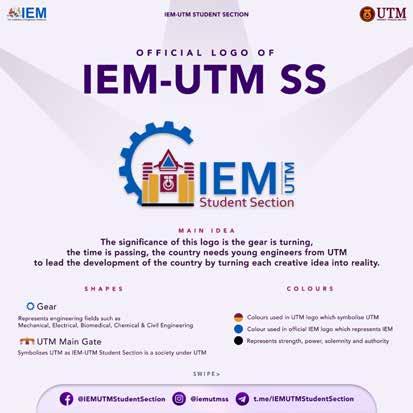
Winner’s Logo Design
As approved by Council and announced at the Annual General Meeting, IEM will be conducting the Council Elections for session 2021/2022 via electronic balloting.
This is to facilitate and enable more members to be able to participate in selection of members to represent them in the IEM Council.
However, to facilitate the smooth implementation of the electronic balloting, all Corporate Members are required to update their record in the IEM portal with their latest email addresses and mobile phone numbers.
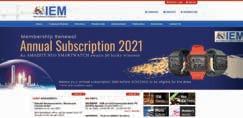
DEADLINE
28 February 2021
TUGU NEGARA: THE UNFORGOTTEN NATIONAL WAR MEMORIAL
Last year, I was at the Board of Engineers’ office in Kuala Lumpur to renew my annual Professional Engineer’s registration. On the way back, I decided to visit the nearby Tugu Negara or National Monument. I had read about this monument in history textbooks and seen it on television. Even the old one ringgit note carried a picture of the Tugu Negara on the back. However, I had never visited Tugu Negara. When I arrived, there were already 3 busloads of tourists at the site, taking pictures of the historical monument. The surrounding environment was pleasant and refreshing; we were surrounded by beautiful greenery and landscaped gardens.
Those born after the 1960s might have learnt briefly about Tugu Negara during their history lessons in school. I did some fact-finding and managed to gather some interesting information which I’d like to share with readers here.
Tugu Negara is located on high ground near Parliament House, in a spacious open area measuring 48,562 sq. m. Apart from the National Monument, there are also a pavilion, fountains, the well-kept garden and a cenotaph. The back portion is covered with natural greenery while the front overlooks the modern skyscrapers that dominate the cityscape of Kuala Lumpur.
Tugu Negara was built at a cost of RM1.5 million and was officially unveiled on 8 February 1966 by the then Yang diPertuan Agong, Sultan Ismail Nasiruddin Shah. Our first Prime Minister, the late Tunku Abdul Rahman was inspired to build the monument after a visit to the Marine Corps War Memorial in Virginia, United States, in October 1960. He believed it was essential to have a monument to commemorate those who had perished while defending the nation’s freedom, particularly against the Japanese Occupation during World
War II (1941-1945) and the communist insurgency during the Malayan Emergency which lasted for 12 years, from 1948 to 1960. It was reported that about 11,000 civilians and security personnel were killed during this period. So Tunku invited the late Tan Sri Felix de Weldon, an American of Austrian origin (also the architect for the construction of the Marine Corps War Memorial), to design the Tugu Negara.
Work began in 1963 and the monument was completed in 1966. The bronze-based sculpture comprises seven statues. Slumped at the base are two statues which depict dead enemies. On the right and left are two soldiers holding machine guns in an ever-ready posture to defend the country. In the centre, a soldier is helping a wounded companion in his arms and at the top is a soldier standing tall in a victory pose, holding the national flag in his right hand.
The monument is 15m tall, making Tugu Negara the biggest free-standing bronze sculpture in the world. The 7 statues also symbolise leadership, suffering, unity, vigilance, strength, courage and sacrifice. The statues are placed on stones imported from the small coastal city of Karlshamn in southeastern Sweden. The base is made from granite and bears the Malayan Coat of Arms, flanked by inscriptions in English and Jawi which read:
“Dedicated to the heroic fighters in the cause of peace and freedom. May the blessing of Allah be upon them”

Ir. Dr Oh Seong Por
Ir. Dr Oh Seong Por is the immediate past chairman of IEM Negeri Sembilan Branch.
Tugu Negara suffered a tragic moment on 27 August 1975, just four days before the anniversary of our Independence Day. An explosive device, set off by a communist terrorist, caused serious damage to the monument, resulting in a few statues being damaged and dislocated from the base. At that time, I was still in primary school but I remembered watching the evening news broadcast over Radio and Television Malaysia or RTM, during which the government appealed to the public to donate generously to restore the damaged statues.
The restoration work took almost 2 years before the Tugu Negara was unveiled again on 11 May 1977. Today, it stands tall and mighty as the nation’s iconic war memorial, even though Warriors’ Day commemorative services are no longer performed at this particular location.
As I was leaving the site, a thought came into my mind. Tugu Negara reminded me of the blockbuster movie, Transformers, in which the protector robot, Optimus Prime, passionately defended Earth by defeating the invading robot Megatron, and declared “I Rise, You Fall”. This underscores the message that our sovereignty has been protected through the sacrifices of our patriotic fighters.
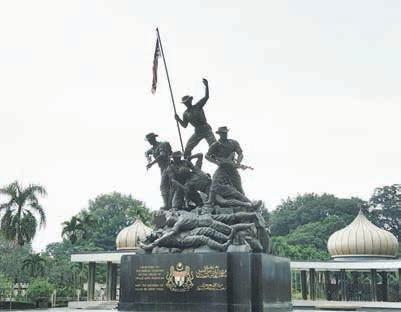
Tugu Negara standing majestically near Parliament House
Kepada Semua Ahli,
TEMUDUGA PROFESSIONAL
Tarikh: 10 Disember 2020
SENARAI CALON-CALON YANG LAYAK MENDUDUKI TEMUDUGA PROFESIONAL TAHUN
2020
Berikut adalah senarai calon yang layak untuk menduduki Temuduga Profesional bagi tahun 2020.
Mengikut Undang-Undang Kecil IEM, Seksyen 3.8, nama-nama seperti tersenarai berikut diterbitkan sebagai calon-calon yang layak untuk menjadi Ahli Institusi, dengan syarat bahawa mereka lulus Temuduga Profesional tahun 2020.
Sekiranya terdapat Ahli Korporat yang mempunyai bantahan terhadap mana-mana calon yang didapati tidak sesuai untuk menduduki Temuduga Profesional, surat bantahan boleh dikemukakan kepada Setiausaha Kehormat, IEM. Surat bantahan hendaklah dikemukakan sebulan dari tarikh penerbitan dikeluarkan.
Ir. Dr David Chuah Joon Huang Setiausaha Kehormat, IEM (Sessi 2020/2021)
PERMOHONAN BARU
Nama Kelayakan
KEJURUTERAAN AUTOMOTIF
ADNAN BIN KATIJAN DIPL. ING (ULM UNIVERSITY OF APPLIED SCIENCE) (AUTOMOTIVE, 2002) MSc (UTM) (AUTOMOTIVE, 2018)
KEJURUTERAAN KOMUNIKASI
AZURA BINTI HAMZAH BE HONS (IIUM) (COMMUNICATION, 2005) ME (MALAYA) (TELECOMMUNICATION, 2009) PhD (MALAYA) (2012)
KEJURUTERAAN ELEKTRONIK
KAHARAUL AFANDI BIN KAHAR BE HONS (USM) (ELECTRONIC, 2010)
MOHD HUSAINI BIN MAZNUDEEN BE HONS (UTM) (ELECTRICALTELECOMMUNICATION, 2010)
KEJURUTERAAN MEKANIKAL
CHIA CHIN KUAN BE HONS (MALAYA) (MECHANICAL, 1999)
EDDY SHAZAMIE BIN BAHAROM BE HONS (UTM) (MECHANICAL, 2008)
KAMAL ARIF BIN KAMAL ISMADI ME HONS (MANCHESTER) (MECHANICAL, 2012)
MOHD DASUKI BIN YUSOFF BE HONS (UTM) (MECHANICAL -AUTOMOTIVE, 2005) MPhil (UTM) (2019)
NIK MOHAMAD AMIRUDIN BIN NIK LAH BE HONS (UiTM) (MECHANICAL, 2012)
NOOR HAFIZ BIN NOORDIN BE HONS (UTM) (MECHANICAL-INDUSTRY, 2009) MSc (UiTM) (MECHANICAL, 2018)
KEJURUTERAAN POLIMER
NOR AZURA BINTI ABDUL RAHIM BE HONS (USM) (POLYMER, 2007) MSc (USM) (POLYMER, 2010)
KEJURUTERAAN SUMBER AIR
HOO SHYAN SHYAN ME WITH MERIT (PORTSMOUTH) (CIVIL, 2003)
PERMOHONAN BARU / PERPINDAHAN MENJADI AHLI KORPORAT Nama Kelayakan
KEJURUTERAAN AWAM
HASNIDA BINTI ABDUL RAZAK BE HONS (UTM) (CIVIL, 1996)
PERPINDAHAN AHLI
No. Ahli Nama Kelayakan
KEJURUTERAAN AWAM
44403 KHAIRUL ANWAR BIN HATTA BE HONS (UiTM) (CIVIL, 2011) MSc (UTP) (CIVIL, 2016)
87400 LAU JOE JIUNN BE HONS (UPM) (CIVIL, 2015)
93929 LAW CHENG YANG BE HONS (SWINBURNE) (CIVIL, 2014)
93543 LIEW KHANG YUEH BE HONS (UTAR) (CIVIL, 2016)
86156 ONG CHUN SHAN, DAVID ME HONS (NOTTINGHAM) (CIVIL, 2015)
KEJURUTERAAN BAHAN
93687 NIK MOHAMAD AMRI HAFIZ BIN ZULKIFLI BE HONS (IIUM) (BE HONS MECHANICALAUTOMOTIVE, 2015)
KEJURUTERAAN ELEKTRIKAL
90347 AHMAD SAIFUDDIN BIN IBRAHIM BE HONS (UiTM) (ELECTRICAL, 2016)
77925
BAVANATHAN A/L SELVAMANY BE HONS (UNITEN) (ELECTRICAL POWER, 2015)
26942 CHARLES RAYMOND A/L SARIMUTHU BE HONS (MALAYA) (ELECTRICAL, 2006) ME (MALAYA) (2010) PhD (UNITEN) (2019)
70312 MAHENDRAN A/L BATUMALAY BE HONS (UPM) (ELECTRICAL & ELECTRONICS, 1999)
21203 MUZAMIR BIN ISA BE HONS (UTM) (ELECTRICAL, 2001)
ME (UTHM) (ELECTRICAL, 2004)
PhD (AALTO UNIVERSITY) (2013)
94032 SHANGAR EAGAMATHAN BE HONS (NANYANG) (ELECTRICAL & ELECTRONIC, 2011) MSc (NANYANG) (POWER, 2016)
112188 WOOI CHIN LEONG BE HONS (UMS) (ELECTRICAL & ELECTRONICS, 2011) ME (UTM) (ELECTRICAL, 2013) PhD (UTM) (ELECTRICAL, 2017)
KEJURUTERAAN INDUSTRI
90159 IZZUDIN BIN IBRAHIM BSc HONS (STATE UNIVERSITY OF NEW YORK AT BUFFALO) (INDUSTRIAL, 2015)
KEJURUTERAAN MEKANIKAL
112483 AB AZIZ BIN MOHD YUSOF BE HONS (UTM) (MECHANICAL, 2010) ME (UTM) (BIOMEDICAL, 2013) PhD (UTM) (BIOMEDICAL, 2017)
70605 GOH DES SOH BE HONS (UTAR) (MECHANICAL, 2014)
74201 KOH WEI HAO ME HONS (BATH) (MECHANICAL, 2014)
80742 LOH KWAN JOU BE HONS (UTAR) (MECHANICAL, 2012)
35147 MOHAMMED ALIFF BIN MOHD ZAIN BE HONS (UiTM) (MECHANICAL, 2011)
49372 RIFQI IRZUAN BIN ABDUL JALAL BE HONS (OKAYAMA) (MECHANICAL, 2008) PhD (LOUGHBOROUGH) (2018)
90037 TOH ZHI WEI BE HONS (MMU) (MEHCANICAL, 2012)
38785 WONG SIONG BING BE HONS (MONASH) (MECHANICAL, 2008)
KEJURUTERAAN PENGANGKUTAN
61124 NOORFAKHRIAH BINTI YAAKUB BE HONS (UTP) (CIVIL, 2010)
KEJURUTERAAN PERSEKITARAN
58825 YAP YI SHEN BE HONS (UTAR) (ENVIRONMENTAL, 2017)
PERMOHONAN BARU / PERPINDAHAN MENJADI AHLI KORPORAT No. Ahli Nama Kelayakan
KEJURUTERAAN AWAM
56636 AHMAD FAISAL BIN MOHD GHAZALI BE HONS (UTM) (CIVIL, 2013) ME (UTM) (CIVIL-STRUCTURE, 2016)
19884 ILANCHELVAN A/L POLANIPPAN BSc HONS (UTM) (CIVIL, 2001) ME (UTM) (GEOTECHNICS, 2020) 41070 NORASPALELA BINTI ABDULLAH BE HONS (UiTM) (CIVIL, 2008) 75261 SHAHIRON BIN SHAHIDAN BE HONS (UNISEL) (CIVIL, 2007) ME (UPM) (STRUCTURAL & CONSTRUCTIONS, 2010) PhD (USM) (2014)
KEJURUTERAAN ELEKTRIKAL
28991 LEE WAI YIN BE HONS (UTP) (ELECTRICAL & ELECTRONICS, 2004)
KEJURUTERAAN KIMIA
32600 NG KOK SUM BE HONS (UTM) (CHEMICAL, 2006) PhD (NOTTINGHAM) (2009)
KEJURUTERAAN MEKANIKAL
43670 MURRALITHARAN A/L RAJANDRAN BE HONS (UNITEN) (MECHANICAL, 2009)
ERRATA
Adalah dimaklumkan bahawa terdapat satu kesilapan atas kelayakan calon berikut dalam senarai yang diluluskan untuk menduduki Temuduga Profesional dalam buletin bulan Disember.
PEMINDAHAN AHLI
Nama Kelayakan
KEJURUTERAAN PETROLEUM
KOH JUNG HUNG BE HONS (UTM) (CHEMICAL, 1999) MSc (GREENWICH) (FACILITIES MANAGEMENT, 2004)
CONTINUATION FROM DECEMBER ISSUE 2020
PEMINDAHAN AHLI KEPADA AHLI KORPORAT
No. Ahli Nama Kelayakan
KEJURUTERAAN KIMIA
54032 HASSIMI BIN ABU HASAN BE HONS (UKM) (BIOCHEMICAL, 2007) PhD (UKM) (CHEMICAL & PROCESS, 2012)
KEJURUTERAAN KOMUNIKASI
56975 ANG CHUNG HUI HE NONS (UniMAP) (COMMUNICATION, 2014)
KEJURUTERAAN MEKANIKAL
49786 AZNIZAM BIN AHMAD BE HONS (UTM) (MECHANICAL, 2012)
28618 AZROL BIN JAILANI BE HONS (UTHM) (MECHANICAL, 2007)
71681 ERWIN EFFENDY BIN SAJALI BE HONS (UTP) (MECHANICAL, 2001) MSc (CURTIN UNIVERSITY) (PROJECT MANAGEMENT, 2014)
104274 MAARUF BIN MOHAMAD BE HONS (UTP) (MECHANICAL, 2010) MSc (UTM) (PETROLEUM, 2015)
41194 MOHD KHAIRUL BIN MAHTAR BE HONS (UiTM) (MECHANICAL, 2000)
93827 MUHAMMAD SIDDIQ BIN SALLEHUDDIN ME (SHEFFIELD) (MECHANICAL, 2013)
78865 NG KEAN ENG BE (MURORAN INSTITUTE OF TECHNOLOGY) (MECHANICAL SYSTEM, 1998) ME (MURORAN INSTITUTE OF TECHNOLOGY) (MECHANICAL,SYSTEMS, 2000) PhD (MURORAN INSTITUTE OF TECHNOLOGY) (2003)
81850 ONG TENG CHUAN BSc (NATIONAL TAIWAN) (MECHANICAL, 2005)
70568 TAN CHEE HSIANG BE HONS (UTAR) (MECHANICAL, 2014)
88325 TEO KAI PENG ME HONS (BRISTOL) (MECHANICAL, 2013)
37607 TEO KOK THYE BE HONS (UKM) ) MECHANICAL, 2010)
36312 YEE CHEN VEE, TEDDY BE HONS (UiTM) (MECHANICAL, 2005)
KEJURUTERAAN TELEKOMUNIKASI
62164 MOHD FAZRI BIN ABD LATIF BE HONS (UiTM) (ELECTRICAL, 2008)
PEMINDAHAN KEPADA AHLI (MELALUI PEPERIKSAAN PENILAIAN PROFESIONAL)
No. Ahli Nama Kelayakan
KEJURUTERAAN AWAM
50674 CHAN KHUNG LEI BE HONS (UNISEL) (CIVIL, 2008)
79262 CHOW MING FAI BE HONS (UTM) (CIVIL, 2007) PhD (UTM) (CIVIL, 2012)
KEJURUTERAAN ELEKTRIKAL
20105 ZUHAINA BINTI ZAKARIA BE HONS (UTM) (ELECTRICAL, 1989) MSc (NAPIER UNIVERSITY) (INFORMATION TECHNOLOGY CONTROL, 1997) PhD (STARTHCLYDE) (2005)
KEJURUTERAAN ELEKTRONIK
45842 MOHD SHAH RIZAL BIN SAMSUDIN BE HONS (UTM) (ELECTRICALELECTRONICS, 2009) MSc (UTP) (ELECTRONICS SYSTEM, 2015)
KEJURUTERAAN MEKANIKAL
37531 CHEW CHIEN LYE @ MERVIN BE HONS (UKM) (MECHANICAL, 2011)
65199 CHONG KAI FENG BE HONS (MMU) (MECHANICAL, 2013)
33782 HUA SHIJIE, NORMAN BE HONS (USM) (MECHANICAL, 2005) MSc (MALAYA) (MECHANICAL, 2017)
25673 MD FAHMI BIN ABD SAMAD @ MAHMOOD BE HONS (UTM) (MECHANICAL, 2000) ME (UTM) (ENGINEERING MANAGEMENT, 2002) PhD (UTM) (MECHANICAL, 2009)
KEAHLIAN
24328 YAP TZE CHUEN BE HONS (UTM) (MECHANICAL, 2000)
PERMOHONAN MENJADI AHLI KORPORAT No. Ahli Nama Kelayakan
KEJURUTERAAN AWAM
108218 AMER BIN MOHAMAD HUSIN @ HUSSAIN BE HONS (USM) (CIVIL, 2001)
108319 CHEAH SHI YUN BE HONS (PORTSMOUTH) (CIVIL, 2012) MSc (PORTSMOUTH) (CIVIL WITH STRUCTURAL, 2013)
108039 ELIZA SUFINAH BINTI MAT SEPIN BE HONS (UiTM) (CIVIL, 2000)
108221 HONG EI SHENG BE HONS (ILLINOIS) (CIVIL, 2008)
108047 IZWAN SHAH BIN IBRAHIM BE HONS (UiTM) (CIVIL, 2009)
53592 KEW CHUEN FATT BE HONS (UKM) (CIVIL & STRUCTURAL, 2013)
108223 MOHAMMED IBNI BIN ABDUL SABUL BE HONS (UiTM) (CIVIL, 2007)
108320 MOHD SHAHRUL NIZAM BIN MARZUKI BE HONS (UPM) (CIVIL, 2006)
108041 MUHAMMAD RUZI BIN YAAKUB ADV.DIP (UiTM) (CIVIL, 1995)
108046 MUHAMMAD ZAMRI BIN UZNI BE HONS (UiTM) (CIVIL, 2012)
17760 NOOR AZLINE BINTI MOHD NASIR BE HONS (UiTM) (CIVIL, 1999)
108038 NORAINI BINTI SULIMAN BE HONS (UiTM) (CIVIL, 2006)
108214 SABIRIN BIN HASSAN BSc (NORTH CAROLINA) (CIVIL, 1987)
108314 TAJUDDIN BIN YAHAYA BE HONS (UiTM) (CIVIL, 2002)
108317 THULASI A/P GOVENDRAN BE HONS (KLiUC) (CIVIL, 2011)
95805 WAN FADLI BIN WAN MOHAMAD BE HONS (UiTM) (CIVIL, 2001)
28197 ZAINAL ABIDIN BIN HASAN BE HONS (MALAYA) (CIVIL, 2007)
108213 ZAKARIA BIN MASRUR BE HONS (UTM) (CIVIL, 2005)
KEJURUTERAAN ELEKTRIKAL
108316 JAYVARMAA A/L RAJARAM BE HONS (UTP) (ELECTRICAL & ELECTRONICS, 2014)
108222 KHAIRUN SYAZMIN BINTI ISMAIL BE HONS (UPM) (ELECTRICAL & ELECTRONICS, 2003)
108318 LEE TIAN GIAP BE HONS (HERTFORDSHIRE) (ELECTRICAL & ELECTRONIC, 1997)
108040 MOHAMAD RUZAINI BIN ABDUL RASHID BE HONS (UniMAP) (ELECTRICAL SYSTEM, 2014)
36884 MOHD FATHI NADWI BIN MOHD FAUZI BE HONS (UTeM) (ELECTRICAL POWER ELECTRONIC & DRIVE, 2007)
108210 MOHD MOHYDDIN BIN MOHAMED NOR BE HONS (UTM) (ELECTRICAL, 1995)
108037 MURSYID BIN ABD GHANI BE HONS (UiTM) (ELECTRICAL, 2008)
KEJURUTERAAN ELEKTRONIK
108217 FIDELIA OLGA FRED BE HONS (UiTM) (ELECTRICAL, 2004)
108216 YU SIAW CHEUN, ARIUS BE HONS (UNI OF LEEDS) (ELECTRONIC & ELECTRICAL, 1998)
KEJURUTERAAN KIMIA
108220 NAZEEM BIN ZAHARI BE HONS (UPM) (CHEMICAL, 2005)
KEJURUTERAAN MEKANIKAL
108215 ASRUL EFFENDY BIN ISMAIL BE HONS (UNIMAS) (MECHANICAL, 2005)
108212 SAYUTI BIN NASHIR BE HONS (UiTM) (MECHANICAL, 2006)
108315 SERPICO ANAK BARI BE HONS (UNIMAS) (MECHANICAL, & MANUFACTURING SYSTEM, 2000)
79351 YAP LEE LIP BE HONS (MALAYA) (MECHANICAL, 2014)
KEJURUTERAAN SUMBER AIR
108211 MUHAMMAD ISKANDAR BIN SAPONG BE HONS (UPM) (CIVIL, 2003)
PERMOHONAN MENJADI AHLI (MELALUI PEPERIKSAAN PENILAIAN PROFESIONAL) No. Ahli Nama Kelayakan
KEJURUTERAAN AWAM
108044 AZMI BIN ALADDIN @ ALLADIN BE HONS (PORTSMOUTH) (CIVIL, 1997)
108045 MOHAMED BIN DAUD BSc HONS (LOUGHBOROUGH UNIVERSITY OF TECHNOLOGY) (CIVIL, 1983)
108042 SAIFFUDDIN BIN SHEAFI BE HONS (UTM) (CIVIL, 2006)
KEJURUTERAAN ELEKTRIKAL
108043 NAS NAWEERAH BINTI RAHIM BE HONS (UTHM) (ELECTRICAL, 2006)
KEJURUTERAAN MEKATRONIK
108219 MOHAMED ZAFRAN BIN HAJA MOHIDEEN BE HONS (IIUM) (MECHATRONICS, 2005) Mtech (CURTIN) (PETROLEUM TECHNOLOGY, 2011)
PEMINDAHAN KEPADA AHLI ‘COMPANION’ No. Ahli Nama Kelayakan
KEJURUTERAAN MEKANIKAL
64800 RAJA MUHD ABDULLAH BIN RAJA SHAH RIMAN BE HONS (UTP) (MECHANICAL, 2007)
KEJURUTERAAN PEMBUATAN
52498 AHMAD DZULKARNAIN BIN SALEHUDDIN BE HONS (IIUM) (MANUFACTURING, 2011)
PERMOHONAN MENJADI AHLI ‘COMPANION’ No. Ahli Nama Kelayakan
KEJURUTERAAN AWAM
107807 ABDUL AZIZ BIN JOHARI BE HONS (UiTM)(CIVIL, 2005)
107806 MOHD NORHAFIDZ BIN KEFLY BE HONS (UTP)(CIVIL, 2008)
108127 MOHD ZULHAIRI BIN SOBRI BE HONS (UTP)(CIVIL, 2008)
108126 NOR RIZAN BIN MOHD AKHIR BE HONS (UNI. OF MALAYA, 1982)
107810 SUHAIMI ABD AZIZ BE HONS (UNITEN)(CIVIL, 2009)
108132 ZAID ISKANDAR BIN JARAIEE BE HONS (UTHM)(CIVIL, 2008)
KEJURUTERAAN ELEKTRIKAL
107808 MARCO P. KISSOL BE HONS (UTHM) (ELECTRICAL, 2003)
108129 MUHAMMAD SANJAY BIN ABDULLAH BE HONS (UTHM) (ELECTRICAL, 2009)
KEJURUTERAAN ELEKTRONIK
107803 GOH CHOOI CHUAN BE HONS (UNI. OF STRATHCLYDE) (ELECTRICAL & ELECTRONIC, 1988)
107805 MOHD ABDUL HADI BIN OSMAN BE HONS (MMU) (ELECTRONICS, 2004) ME (UMP)(2018)
107812 YONG SOON FUAN BE HONS (UTHM) (ELECTRICAL, 2003)
KEJURUTERAAN KIMIA
108128 HEE TIT SHAN BSc (MICHIGAN TECHNOLOGICAL UNI.) (CHEMICAL, 1992)
107811 NURLEYNA BINTI YUNUS BE HONS (UTM) (CHEMICAL, 1999) PhD (UKM)(CHEMICAL & PROCESS, 2015)
KEJURUTERAAN KOMPUTER
108130 MOHD SHAIFUL AZHAR BIN SAAD BE HONS (UTM) (COMPUTER, 2005)
KEJURUTERAAN MEKANIKAL
108391 AMIRUL IMAN BIN AZIZDIN BE HONS (UTP) (MECHANICAL, 2009)
108131 HASZEME BIN ABU KASIM BE HONS (UiTM) (MECHANICAL, 2007) MSc (UiTM)(MECHANICAL, 2014)
107809 MOHD YUZAINI BIN HUSSIN BE (MEIJI UNIVERSITY) (MECHANICAL, 2010)
108390 WAH SHIH LEON BE HONS (UTAR) (MECHANICAL, 2010)
107804 YONG MAHMOD ISKANDAR BIN AB WAHAB BE HONS (UTeM) (MECHANICAL-THERMAL FLUIDS, 2007)
PERMINDAHAN KEPADA AHLI SISWAZAH No. Ahli Nama Kelayakan
KEJURUTERAAN AWAM
35693 NUR SYAMIMI BINTI ZAIDI BE HONS (UTM)(CIVIL, 2010) PhD (UTM)(CIVIL, 2016)
40329 AMYRHUL BIN ABU BAKAR BE HONS (UTM)(CIVIL, 2011) ME (UTM)(CIVILHYDRAULICS & HYDROLOGY, 2013)
89071 AWANGKU ASYRAF BIN AWANGKU HIDUP BE HONS (SEGi UNI.)(CIVIL, 2018)
79238 BONG KHI YII, CHESTER BE HONS (SWINBURNE UNI. OF TECH.)(CIVIL, 2018)
104635 CHOW YEE FONG BE HONS (CURTIN UNI.) (CIVIL & CONSTRUCTION, 2019)
33087 DG. RAZLINAH BINTI ABD RAZAK BE HONS (UiTM)(CIVIL, 2009)
90740 KUEK CHAI JIAN BE HONS (THE UNI. OF ADELAIDE)(CIVIL & STRUCTURAL, 2018)
99039 LIM CHU CHENG BE HONS (UTAR)(CIVIL, 2019)
68984 MOHAMAD SYAMSUL HIZHAM BIN SABLEE BE HONS (UiTM)(CIVIL, 2016)
47341 MOHAMAD ZULBAHARI BIN MOHAMAD ZU BE HONS (UTP)(CIVIL, 2013)
57669 MOHAMMAD AMRI B. ABD HAMID BE HONS (USM)(CIVIL, 2016)
33212 MOHD MUSTAQIM BIN MOHD NORDIN BE HONS (UiTM)(CIVIL, 2010) ME (UiTM)(CIVIL, 2013)
78915 MUHAMMAD ASYRAF BIN MASRI BE HONS (UTM)(CIVIL, 2019)
89402 NG SUI LYN BE HONS (MONASH UNI.) (CIVIL, 2019)
57617 NOORAIZEE BT. MOHD SALIM BE HONS (UTM)(CIVIL, 2013)
69813 NURUL NADZATUL FARHANA BINTI ABDUL HALIM BE HONS (UNIMAS)(CIVIL, 2017)
80206 ONG LI CHOO, ELIZABETH BE HONS (UTM)(CIVIL, 2016)
66283 PRAVIN A/L PELANISAMY BE HONS (IUKL)(CIVIL, 2018)
32093 RAFIUDDIN BIN YEOB RAMLI BE HONS (USM)(CIVIL, 2011) ME (CHULALONGKORN UNI.) (CIVIL, 2013)
80413 TAN CHENG YUAN, SHANON BE HONS (UTAR)(CIVIL, 2019)
55057 TAN SOCK FUNG BE HONS (UTHM)(CIVIL, 2016)
96086 TAN YIN BOEY BE HONS (UniMAP)(CIVIL, 2018)
74814 WONG SUI HIENG BE HONS (UTM)(CIVIL, 2018)
84764 YEOH KHAI HUNG BE HONS (UNI.OF MALAYA) (CIVIL, 2016)
61845 YUSMIN B. YAAKUB BE HONS (UTHM)(CIVIL, 2014)
KEJURUTERAAN ELEKTRIKAL
84990 LAI ZHI YIN BE HONS (UTAR) (ELECTRICAL & ELECTRONIC, 2019)
64899 MUHAMMAD NUR HAZZIM B. ABU HANIPAH BE HONS (UTeM) (ELECTRICAL, 2018)
36155 NORSURAYA BINTI RADZUAN BE HONS (UTM) (ELECTRICALTELECOMMUNICATIONS, 2012)
58290 NURUL MUSILIMAH BT. LAHAJI BE HONS (UTHM) (ELECTRICAL, 2013)
48710 NURUL SYAZWANI BINTI MOHD AZAMI BE HONS (UTHM) (ELECTRICAL, 2012)
34555 OSMAN BIN ABU BAKAR BE HONS (UTeM) (ELECTRICAL-CONTROL, INSTRUMENTATION & CONTROL, 2009) ME (UTM)(ELECTRICAL POWER, 2017)
45930 TAN SOON THEAM, ADRIAN BE HONS (USM) (ELECTRICAL, 2014)
79748 TAN ZHONG YIH BE HONS (UNITEN) (ELECTRICAL POWER, 2018)
80311 YEE WEI SHEN BE HONS (UTAR) (ELECTRICAL & ELECTRONIC, 2019)
KEJURUTERAAN ELEKTRONIK
84837 AMIRAH ATHIRAH BINTI ROHAZAM BE HONS (UiTM) (ELECTRONIC, 2017)
62255 KAN PEI EN BE HONS (MONASH UNI.) (ELECTRICAL & COMPUTER SYSTEMS, 2016)
58388 MUHAMMAD SYAHMI B. SHAHROL BE HONS (UNIMAS) (ELECTRONICSTELECOMMUNICATIONS, 2016)
64880 NURUL IZZETY BT. HAMDAN BE HONS (UTHM) (ELECTRONIC, 2018)
KEJURUTERAAN KIMIA
68551 GOH CHUN JIE BE HONS (UMS)(CHEMICAL, 2017)
35999 NOR ERNIZA BINTI MOHAMMAD ROZALI BE HONS (UTM)(CHEMICAL, 2011)
67343 NURUL HAZWANI BT ROHALIM BE HONS (UiTM)(CHEMICAL & PROCESS, 2016)
47145 SHARIFAH NURUL FAZILLA BINTI GHAZALI BE HONS (UNIMAS) (CHEMICAL, 2013)
80232 YOGESSVARAN A/L VEKNESVARAN BE HONS (UTP)(CHEMICAL, 2017)
KEJURUTERAAN MEKANIKAL
75886 ABDUL HALEM HAFIDZ BIN ABDUL KADIR BE HONS (UiTM) (MECHANICAL, 2018)
KEAHLIAN
55087 ABDUL RAHMAN BIN NASUSHARDIN BE HONS (UTHM) (MECHANICAL, 2016)
51891 ANTONY REY O WAN KEN NYEE BE HONS (UNIMAS) (MECHANICAL & MANUFACTURING, 2015)
81867 ARAN PASUPATHI A/L PASUPATHI BE HONS (IUKL) (MECHANICAL, 2016)
94750 LIM MENG YAO BE HONS (UTAR) (MECHANICAL, 2018)
80326 LIM ZHI YI BE HONS (UTAR) (MECHANICAL, 2017)
35267 MASRUL ANUAR BIN MAHMOOD BE HONS (UiTM) (MECHANICALMANUFACTURING, 2011)
37497 MOHD ARIEF FIRDAUS BIN MOHD YUSOF BE HONS (UKM) (MECHANICAL, 2009)
49083 MOHD SHAHRIZAL BIN MOHD ALI BE HONS (UiTM) (MECHANICAL, 2012)
51752 MUHAMMAD HELMY HUSSAINY BIN KHAZALI BE HONS (UKM) (MECHANICAL, 2016)
36518 NORAZREEN BINTI SAMSURI BE (UMP) (MECHANICAL, 2012) MPhil (UTM)(2017)
66663 VICKNESWARAN A/L PANNEERSELVAN BE HONS (UNITEN) (MECHANICAL, 2018)
KEJURUTERAAN MEKATRONIK
62948 CHAI MAU SHERN BE HONS (UTeM) (MECHATRONICS, 2017)
KEJURUTERAAN PEMBUATAN
50503 ABBAS BIN GHAZALI BE HONS (UiTM) (MECHANICALMANUFACTURING, 2016)
60367 SYARFADILA EZURIDA BT. SHAARI BE HONS (UTeM) (MANUFACTURINGMANUFACTURING DESIGN, 2013)
PERMOHONAN MENJADI AHLI SISWAZAH No. Ahli Nama Kelayakan
KEJURUTERAAN AEROANGKASA
107826 MOHAMAD HIZAMI BIN MOHAMAD HILMI
KEJURUTERAAN AWAM
108023 ABDUL HAFIZH BIN ABDUL NASIR
107772 AHMAD FIRDAUS BIN MELAN ZUBIR
ME HONS (THE UNI. OF BATH)(AEROSPACE, 2018)
BE HONS (UTM)(CIVIL, 2015)
BE HONS (UTM)(CIVIL, 2015)
108431 ALVY BARTHOLOMEUS PHILIP BE HONS (UTHM)(CIVIL, 2003)
BE HONS (IUKL)(CIVIL, 2017)
108277 ARIVALAGAN A/L REVICHANDRAN
108008 AZULAIKHA BT AZANI BE HONS (THE UNI. OF ADELAIDE)(CIVIL & ARCHITECTURAL, 2014)
108462 BONNIE LAU BE HONS (UCSI UNI.)(CIVIL, 2018)
108411 CHAN CHYUN SHENG BE HONS (UTM)(CIVIL, 2013)
108032 CHANG TING WAI BE HONS (UMP)(CIVIL, 2014)
108186 CHEAH BIN YUI ME HONS (THE UNI. OF NOTTINGHAM)(CIVIL, 2019)
108432 CHEAH YONG CHEAN BE HONS (UNI. OF MALAYA) (CIVIL, 2005)
108449 DINESH KUMARAN A/L PALANIANDY BE HONS (UTP)(CIVIL, 2012) MSc (UTP)(CIVIL, 2015)
108406 DOROTHY DOU BE HONS (UMS)(CIVIL, 2011) 108418 Dr MARZUKI BIN AB. RAHMAN BE HONS (UTM)(CIVIL, 1990) MSc (USM) (STRUCTURE, 2002) PhD (UiTM)(CIVIL, 2009) 108010 Dr MAZLIN BTE JUMAIN BE HONS (UTM)(CIVIL, 2012) PhD (UTM)(CIVIL, 2017)
108034 DYANDRA SAKO ANAK DERALD KUWANG BE HONS (SWINBURNE UNI. OF TECH.)(CIVIL, 2019) 108022 FADZREN BIN HIPNI BE HONS (UNIMAS)(CIVIL, 2014)
108273 FAHRUZALI BIN RASHID BE HONS (UiTM)(CIVIL, 2005)
7765 FAZRUL AMZAR BIN KHAIRY BE HONS (CARDIFF UNI.)(CIVIL, 2014) MSc (UiTM)(WATER RESOURCES, 2018)
108004 FIRDAUS EKAPUTRA BIN MARZUKI BE HONS (UiTM)(CIVIL, 2012)
108206 FREDRIK PHANGKAWIRA BE HONS (SWINBURNE UNI. OF TECH.)(CIVIL, 2014)
108003 FUANG SIEW LU BE HONS (UTM)(CIVIL, 2007)
108450 GUNASEELAN A/L NADARAJAN BE HONS (UTHM)(CIVIL, 2012)
108054 HASRUL BIN MOHD ARIFIN BE HONS (UiTM)(CIVIL, 2007)
108253 HO CHEN YANG, PHILIP BE HONS (SWINBURNE UNI. OF TECHNOLOGY)(CIVIL, 2010)
108407 HO WEE KHOON BE HONS (UCTS)(CIVIL, 2018)
108405 IRENA BINTI NAUBI BE HONS (UTM)(CIVIL, 2012) ME (CIVIL-HYDRAULICS & HYDROLOGY, 2016)
108420 JAZLAN BIN MOHAMED AMIN BE HONS (USM)(CIVIL, 2001)
108174 KHOR HAI CHUAN BE HONS (UPM)(CIVIL, 2003)
108049 KII YII HENG BE HONS (CURTIN UNI.) (CIVIL & CONSTRUCTION, 2010)
108263 LAM WAI KIN BE HONS (UTM)(CIVIL, 2001) MSc (UNI. OF NEWCASTLE UPON TYNE) (ENVIRONMENTAL, 2003)
108057 LEE JIA HUAN BE HONS (THE UNI. OF WESTERN AUSTRALIA) (CIVIL, 2013)
108456 LEE KANG SHENG BE HONS (THE UNI. OF ADELAIDE)(CIVIL & STRUCTURAL, 2016)
108031 LEE WEI LOON BE HONS (SEGi UNI.) (CIVIL, 2013)
108190 LENG YEE HUI BE HONS (UMP)(CIVIL, 2018)
107999 LEONG CHING YI ME HONS (ICL)(CIVIL, 2019)
108024 LIM JUN JIE BE HONS (CURTIN UNI.) (CIVIL & CONSTRUCTION, 2018)
108447 MARLIZAIHA BINTI MOHD NOOR BE HONS (UTM)(CIVIL, 2008)
108265 MARSHALL ANAK MINGGU BE HONS (UTM)(CIVIL, 2016)
108400 MASLINDA BT MOHIDDIN BE HONS (UNI. OF MALAYA) (CIVIL, 2005)
107815 MOHAMAD LUQMAN BIN MAHADZIR BE HONS (UTP)(CIVIL, 2018)
108422 MOHAMAD RUJHAN BIN ABDULLAH BE HONS (UTM)(CIVIL, 2013)
108013 MOHD ANUAR BIN MOHAMAD BE HONS (UTM)(CIVIL, 2010)
108448 MOHD HANIZAN BIN BAHARI BE HONS (UiTM)(CIVIL, 2008)
108460 MOHD NOOR SHAFIQUE BIN A RAHMAN BE HONS (UKM)(CIVIL & ENVIRONMENTAL, 2015)
108178 MUHAMMAD FAIZ BIN AHMAD SHAFI BE HONS (UniMAP)(CIVIL, 2015) 108201 MUHAMMAD HILMI BIN HASSAN BE HONS (UTM)(CIVIL, 2016)
108293 MUHAMMAD RIZAL BIN ABDUL RAHIM BE HONS (UPM)(CIVIL, 2008)
108187 MUHAMMAD THAQIF BIN TAMUNIF BE HONS (UNITEN)(CIVIL, 2017)
108176 MUHAMMAD ZULFADHLI BIN BOHANI BE HONS (UiTM)(CIVIL, 2013) 108205 NARONGRIT A/L SOM MAI BE HONS (SWINBURNE UNI. OF TECH.)(CIVIL, 2018)
108014 NEOH XIAO BINN ME HONS (ICL)(CIVIL, 2018)
108185 NG SOO DIN BE HONS (INTI INT. UNI.)(CIVIL, 2015) ME (UNI. OF BRADFORD) (CIVIL, 2016) MSc (UNI. OF THE WEST OF ENGLAND BRISTOL) (CONSTRUCTION PROJECT MANAGEMENT, 2016)
107824 NIK FIRDAUS BIN NIK AB HADI BE HONS (UiTM)(CIVIL, 2009)
108275 NORSHAHRIAH BINTI BAHARI BE HONS (UTM)(CIVIL, 2012) MSc (ICL)(ENVIRONMENTAL, 2015)
108182 NUR DIYANA BINTI HAJIJI BE HONS (UiTM)(CIVIL, 2009) MSc (ICL)(SOIL MECHANICS & BUSINESS MANAGEMENT, 2011)
108455 PIRABAGARAN A/L BALASINGAM BE HONS (UTM)(CIVILENVIRONMENTAL, 2003)
108427 RAJA ROSENANI BINTI RAJA ABDULLAH BE HONS (UTP)(CIVIL, 2018)
108033 SANDRA JUJANE ANAK JUTIM BE HONS (UiTM)(CIVIL, 2010)
108397 SHAHRIL IQMAL BIN JOHARI BE HONS (UiTM)(CIVIL, 2017)
107996 SHAMIL BIN AHMAD BE HONS (UiTM)(CIVIL, 2011)
108438 SHAZLAN BIN MUHAMAD SUGANDI BE HONS (UTM)(CIVIL, 2018)
108444 SIM POH KUI, STEVEN BE HONS(UNIMAS)(CIVIL, 2011)
108006 SITI HASMAH BINTI MUSTAPHA BE HONS (UTHM)(CIVIL, 2008)
108416 TAN CHIN SIONG BE HONS (UPM)(CIVIL, 2000)
108398 TAN WEI TECK BE HONS (UCSI UNI.)(CIVIL, 2018)
108050 TENGKU NUR DALILA BINTI TENGKU ENDUT BE HONS (UiTM)(CIVIL, 2013)
108270 TEOH HUI XIN BE HONS (UPNM)(CIVIL, 2018)
108030 TING HUONG HUN BE HONS (UCTS)(CIVIL, 2016)
108025 TING ZHI HONG, TIMOTHY BE HONS (CURTIN UNI. OF TECH.)(CIVIL & CONSTRUCTION, 2015)
108440 WEE CHIANG KIAT BE HONS (CURTIN UNI. OF TECH.)(CIVIL & CONSTRUCTION, 2009)
108252 WONG SOOK WEI BE HONS (UNI. OF MALAYA) (CIVIL, 2017)
107819 WONG TECK FONG BE HONS (THE UNI. OF BIRMINGHAM)(CIVIL, 1998)
108439 WONG WEI KIAN, CELDRIC BE HONS (CURTIN UNI. OF TECH.)(CIVIL & CONSTRUCTION, 2015)
108286 WONG YEW SHAN BE HONS (SWINBURNE UNI. OF TECHNOLOGY)(CIVIL, 2012)
108441 YEE WAI FUNG BE HONS (UKM)(CIVIL & ENVIRONMENTAL, 2004)
108442 YEK NAI CHUANG BE HONS (UTM)(CIVIL, 2011)
108199 ZULKHAIRI BIN MOHD ZAID BSc (UTM)(CIVIL, 2002)
KEJURUTERAAN BAHAN
108036 WOO MUN EE BSc (UNI, OF MINNESOTA) (MATERIALS, 2010) MSc (MASSACHUSETTS INST. OF TECH.)(MATERIALS SC. & ENGINEERING, 2013)
KEJURUTERAAN BIOPERUBATAN
108052 ANNAPOORNA CHANDRASEKHAR BE HONS (UNI. OF MALAYA) (CIVIL, 2013)
108434 Dr SOON GINNY BE HONS (UNI. OF MALAYA) (BIO-MEDICAL, 2014) PhD (UNI. OF MALAYA)(2018)
KEJURUTERAAN ELEKTRIKAL
107825 AHMAD FARIS BIN BAHRUDDIN BE HONS (UNITEN) (ELECTRICAL POWER, 2010)
108200 AHMAD SHAHNON BIN AZINUN B.E.Tech.(HONS.)(UNIKL) (ELECTRICAL, 2009) BEM GE REGISTRATION BRIDGING COURSE (UniKL BET) (ELECTRICAL, 2019)
108430 AMINUDIN BIN ANUAR BE HONS (UniMAP) (ELECTRICAL SYSTEMS, 2013) MSc (UniMAP)(ELECTRICAL POWER, 2015)
108414 AMIRUL AMMAR BIN MOHD AZMI BE HONS (UTM) (ELECTRICAL, 2018)
107814 CHIENG KAH THAI, ANDERSON BE HONS (CURTIN UNI.) (ELECTRICAL POWER, 2019)
108284 CHONG TZE FOONG, HOSEA BE HONS (UNI. OF MALAYA) (ELECTRICAL, 2007)
108195 CHOONG YIT VOON BE HONS (UPM) (ELECTRICAL & ELECTRONICS, 2003)
108452 Dr SITI HAJAR BINTI YUSOFF ME HONS (THE UNI. OF NOTTINGHAM)(ELECTRICAL, 2009)
108207 ELIAKIM BIN CHE YAACOB BE HONS (UTeM) (ELECTRICAL-INDUSTRIAL POWER, 2013)
108184 HARITHARAN A/L M. NANTHAKUMARAN BE HONS (SWINBURNE UNI. OF TECH.)(ELECTRICAL & ELECTRONIC, 2018)
108446 HEMA CHANDRAN A/L JAYASEELAN BE HONS (UKM) (ELECTRICAL & ELECTRONIC, 2017)
108254 HENG JING LEI BE HONS (TAYLOR'S UNI.)(ELECTRICAL & ELECTRONIC, 2016)
108000 HESHALINI A/P RAJAGOPAL @ RAMASAMY BE HONS (UNI. OF MALAYA) (ELECTRICAL, 2013) MESc (UNI. OF MALAYA) (SIGNAL & SYSTEMS, 2016)
108012 HUSNULBAZLI BIN MAKHTAR BE HONS (UTHM) (ELECTRICAL, 2010)
108413 JI CHOU CHEN BE HONS (CURTIN UNI.) (ELECTRICAL POWER, 2019)
108027 LAW SEI JING BE HONS (UNITEN) (ELECTRICAL & ELECTRONICS, 2017)
108421 LOI MING JIUNN, JOHANNES BE HONS (UNITEN) (ELECTRICAL POWER, 2017)
108051 MAHMOOD ANIS SAEED MADHI BE HONS (UniMAP) (ELECTRICAL SYSTEM, 2017)
108285 MOHAMAD HALIMI BIN KOLAN BE HONS (UPM) (ELECTRICAL & ELECTRONIC, 2001)
108191 MOHAMAD IZWAN BIN MOHAMAD YUSOP BE HONS (UNITEN) (ELECTRICAL POWER, 2017)
108433 MOHD ADIB BIN KERYA @ ZAKARIA BE HONS (UTHM) (ELECTRICAL, 2015)
108257 MOHD FAIZ BIN OMAR BE HONS (UTM) (ELECTRICALINSTRUMENTATION & CONTROL, 2009)
108401 MOHD FAIZUL SHAZRIN BIN SHUKOR BE HONS (UTeM) (ELECTRICAL-CONTROL, INSTRUMENTATION & AUTOMATION, 2007)
108028 MOHD KHAIRUL ASHRAF BIN MOHD NAZRI BE HONS (UTM) (ELECTRICAL, 2012)
107822 MOHD ZUHRIE BIN MUSTAMAM BE HONS (UTM) (ELECTRICALINSTRUMENTATION & CONTROL, 2004)
108288 MOK JI YIONG, AARON BE HONS (UNI. OF MALAYA) (ELECTRICAL, 2017)
108274 MUHAMAD AKRAM IZZUDDIN BIN RAZALI BE HONS (UMP) (ELECTRICAL-POWER SYSTEM, 2016)
108291 MUHAMMAD LUQMAN BIN MOHD ZAIDEE BE HONS (UiTM) (ELECTRICAL, 2018) MSc (BRUNEL UNI. LONDON) (SUSTAINABLE ELECTRICAL POWER, 2016)
107645 MUHAMMAD SYAKIR BIN MOHD SHAARI BE HONS (UNITEN) (ELECTRICAL POWER, 2015)
108194 MUHAMMAD ZULHILMI BIN MOHD NOH BE HONS (UTeM) (ELECTRICAL-INDUSTRIAL POWER, 2016)
108255 NADRAH BINTI MOHAMMED ANNAS BE HONS (UTeM) (ELECTRICAL-INDUSTRIAL POWER, 2017)
107821 NORAFIZAN BINTI SAMIN BE HONS (UMP) (ELECTRICAL-POWER SYSTEM, 2018)
108271 NUR FARHANA BINTI FUADI BE HONS (UTHM) (ELECTRICAL, 2009)
107823 NUR MUHAMMAD FAZRUR ASYIQ BIN NORDIN BE HONS (UNITEN) (ELECTRICAL POWER, 2018)
108048 ONG CHUI LING, PEARL BE HONS (UTM) (ELECTRICALINSTRUMENTATION & CONTROL, 2007)
108197 PRAVINAH NAIR A/P SHASIDHARAN BE HONS (UniMAP) (ELECTRICAL ENERGY SYSTEMS, 2014)
108198 SEKAR ALLO PILLAI SHANMUGAM BE HONS (UNI. OF MALAYA) (ELECTRICAL, 1989)
108281 SHARUHASAN BABA BE HONS (UNITEN) (ELECTRICAL POWER, 2008)
108402 SIVANESWARI SAMIIYAH BE HONS (UTeM) (ELECTRICAL-INDUSTRIAL POWER, 2006)
108011 SUJENDRAN A/L VARATHARAJOO BE HONS (UNITEN) (ELECTRICAL & ELECTRONICS, 2012)
108412 SUMAIYAH BINTI MOHD SALAHUDDIN BE HONS (THE UNI. OF MANCHESTER)(ELECTRICAL & ELECTRONIC, 2011) MSc (THE UNI. OF MANCHESTER)(ELECTRICAL POWER SYSTEMS, 2012)
108269 TEO JIAN HONG BE HONS (TAYLOR'S UNI.)(ELECTRICAL & ELECTRONIC, 2016)
108404 TEO WEE YAN ME (THE UNI. OF MANCHESTER)(ELECTRICAL & ELECTRONIC, 2018)
108417 TINAGARAN A/L PERIASAMY NAIDU BE HONS (UTM) (ELECTRICAL, 2012)
108294 ZULFAHMI BIN ZULHASNI ME HONS (UNI. OF SOUTHAMPTON) (ELECTRICAL, 2012)
KEJURUTERAAN ELEKTRONIK
108437 AHMAD KAMIL ZAHIDI BIN MUSTAFFA BE HONS (UTS) (ELECTRICAL, 2019)
107813 Dr TAN JIAN DING BE HONS (UTHM) (ELECTRICAL, 2008) ME (UNI. OF MALAYA) (BIOMEDICAL, 2011) PhD (UNI. OF MALAYA) (AUTOMATION, CONTROL & ROBOTIC, 2017)
108266 MOHAMMAD AMRI BIN ZAINAL BE HONS (UTM) (ELECTRICALMECHATRONIC, 2007) ME (UTM)(ELECTRICALMECHATRONICS & AUTOMATIC CONTROL, 2011)
107816 MUHAMMAD FADZIL BIN MASHOR BE HONS (UTM) (ELECTRONIC SYSTEM, 2017)
108058 MUHAMMAD HAFIZAN BIN ABD RAHIM BE HONS (UKM) (COMMUNICATION & COMPUTER, 2013)
108287 NUR HIDAYAH BINTI SULAIMAN BE HONS (UTeM) (ELECTRONICTELECOMMUNICATION ELECTRONICS, 2016) MSc (UTeM)(ELECTRONIC, 2018)
108451 RAZAK BIN MOHD ALI LEE BE (NAGAOKA UNI. OF TECH.)(ELECTRICAL & ELECTRONIC SYSTEMS ENGINEERING COURSE, 1999)
108002 TAN XIAO JIAN BE HONS (UniMAP) (BIOMEDICAL ELECTRONICS, 2016)
108203 TAUSEEF RASHEQ AHAD BE HONS (MMU) (ELECTRONICSTELECOMMUNICATIONS, 2019)
107773 THIAKU A/L RAMALINGAM BE HONS (MMU) (ELECTRONICSTELECOMMUNICATIONS, 2003)
KEJURUTERAAN KIMIA
108183 AKMAL BIN ANUAR BATCHA BE HONS (UNSW) (CHEMICAL, 2018)
108259 ANG SO KHAI BE HONS (TAYLOR'S UNI.) (CHEMICAL, 2018)
108021 BEH ZI QI ME HONS (THE UNI. OF NOTTINGHAM)(CHEMICAL, 2018)
108290 CHIEW SHU CHING, CHRISTINE BE HONS (UMS)(CHEMICAL, 2011)
108196 Dr LOCK SOW MUN, SERENE BAppSc (UNI. OF TORONTO) (CHEMICAL, 2012) MSc (UTP)(CHEMICAL, 2014) PhD (UTP)(CHEMICAL, 2019)
108428 Dr SUAZLAN BIN MT AZNAM BE (YOKOHAMA NATIONAL UNI.)(CHEMICAL, 2005) PhD (YOKOHAMA NATIONAL UNI.)(CHEMICAL & ENERGY, 2017)
108443 Dr VEKES A/L BALASUNDRAM BE HONS (UMP) (CHEMICAL, 2015) PhD (UTM)(GAS-2018)
107764 JOEL CHUNG BE HONS (CURTIN UNI. OF TECHNOLOGY)(CHEMICAL, 2009)
108055 LEE CHOONG LEK, BRIAN ME HONS (THE UNI. OF NOTTINGHAM)(CHEMICAL with ENVIRONMENTAL, 2018)
107817 LIM MAY TENG ME HONS (THE UNI. OF NOTTINGHAM)(CHEMICAL, 2016)
108267 LOK CHOON THOW BE HONS (UTAR)(CHEMICAL, 2016)
107820 LOW YEE EE BE HONS (CURTIN UNI.) (CHEMICAL, 2017)
107995 MEOR AHMAD NAUFAL ZIKRI BIN MEOR ABD AZIZ BE HONS (UTM)(CHEMICAL PROCESS, 2018)
108435 MOHAMAD L. MASLUDIN SYAH BIN SYAMSURI BE HONS (UTM)(CHEMICALGAS, 2012)
108410 MOHD HAFIDZ BIN MOHAMAD YUSOFF BE HONS (USM)(CHEMICAL, 2005)
108396 MUADZ BIN MISLAL BE HONS (USM)(CHEMICAL, 2015)
108208 NG TZE SHYAN BE HONS (MONASH UNI.) (CHEMICAL, 2017)
108016 NOOR SUFFIANHADI RAMLY BE HONS (UNI. OF MALAYA) (CHEMICAL, 2002)
108276 PEGGY @ TEH PEY GI BE HONS (UTAR)(CHEMICAL, 2019)
108457 SAFRI BIN AHMAT BE HONS (UTP)(CHEMICAL, 2007)
108429 TAN JU KHENG BE HONS (MONASH UNI.) (CHEMICAL, 2018)
108015 TAY SZE YEE ME HONS (HERIOT-WATT UNI.)(CHEMICAL-OIL & GAS TECH., 2019)
108179 THIYAGARAJ A/L RAMAN BE HONS (CURTIN UNI. OF TECH.)(CHEMICAL, 2014)
108458 WAN HARRIS AMIR BIN WAN MOHAMED NOR BE HONS (UTM)(CHEMICALGAS, 2002)
Note: Continuation would be published in February 2021. For the list of approved “ADMISSION TO THE GRADE OF STUDENT”, please refer to IEM web portal at http://www. myiem.org.my.
Pengumuman yang ke-146
SENARAI PENDERMA KEPADA WISMA DANA BANGUNAN IEM
Institusi mengucapkan terima kasih kepada semua yang telah memberikan sumbangan kepada tabung Bangunan Wisma IEM. Ahli-ahli IEM dan pembaca yang ingin memberikan sumbangan boleh berbuat demikian dengan memuat turun borang di laman web IEM http://www.iem. org.my atau menghubungi secretariat di +603-7968 4001 / 5518 untuk maklumat lanjut. Senarai penyumbang untuk bulan November 2020 adalah seperti jadual di bawah:
NO. NO. AHLI
1
2
3
5
6
7
8
9
10
Subscribe to IEM’s Publications Now!
Yes! I would like to be a subscriber of The Institution of Engineers, Malaysia’s publications
Name: _________________________________________________________________________________________________________
Mailing Address: _________________________________________________________________________________________________
Country: ________________________
Company/Institution: ______________________________________________________________________________________________
Title: ____________________________________________________________________________________________________
Telephone No: _________________________ Fax: _________________________ Email: _________________________________
New Subscriber Renewal
Please commence my subscription from: _________________________(month/year) Signature: _______________________________
To start your subscription of IEM’s publications, complete this form and mail it back to the address below. For faster processing, fax it to: +603 7493 1047. Thank you.
What is your primary job title?
Corporate Management (including chairman, president, proprietor, partner, director, vice president, general manager, division manager, import/export manager, other corporate title)
Management (including project/contract/equipment/service/transport district manager, clerk of works, other technical or operating manager)
Engineering/Design (including chief engineer, chief designer, civil/ highway/mechanical/planning engineer, other engineering/design title)
Buying/Purchasing (including chief buyer, buyer, purchasing officer, other buying/purchasing title)
Titles allied to the field (architect, consultant, surveyor, research and development professor, lecturer, supervisor, superintendent, inspector or other allied title)
Others (please specify) ____________________________
What type of organisation do you work in? (Tick one box only)
Contractor
Sub-contractor specialist
Design and build contractor
Consulting engineering/architectural/quantity surveying practice
Mining/quarrying/aggregate production company
Petroleum producer
International/national authorities
National/regional/local government
Public utilities (electricity, gas, water, deck and harbour, other)
Manufacturer
Distributor/importer/agent
Construction department of large industrial/Commercial concern
Association/education establishment/research
Construction equipment hire/rental company
Project/construction management consultancy
Others (please specify) _______________________________
What are the main activities of your organisation? (Tick all that apply)
Constructions of:
Roads/bridges

Manufacturer of:
Construction equipment
Dams/reservoirs/irrigation Cement
Harbours/offshore structures Other construction materials
Foundations/tunnels Distribution
Pipelines/refineries Construction equipment
Structures/steel work
Construction materials
Building (commercial, industrial) Hire/rental of construction equipment
Housing Design
Construction management Earth-moving/open cast mining
Deep mining Aggregate production
Others (Please specify) _________________________________________
Rate (Please tick)
RM360.00 - 12 issues of JURUTERA
RM84.00 - 2 issues IEM Journal (Half-yearly)
Terms and Conditions:
1) The subscription is to be prepaid.
2) Please make cheque payable to Dimension Publishing Sdn. Bhd.
3) Subscriptions are not refundable.
4) Magazine/s will be sent to the mailing address given.
5) Students are entitled for a 20% discount from the above subscription rate.
6) Students must submit a photocopy of the student identification card together with the payment.
7) The above rate is inclusive of delivery charges and applicable in Malaysia only.
8) Additional delivery charges will apply to overseas subscribers.
For subscription enquiries, please contact +603-7493 1049 or email to info@dimensionpublishing.com
